Short-haul flying redefined: The promise of regional air mobility
Why drive to your neighboring city or region when you can fly? Over the past 30 years or so, the standard response has been because driving is cheaper, more convenient, and probably faster door to door. That may not be true for much longer, however. Advances in aerospace technology, new attitudes about travel, and a growing ecosystem of established players and startups could drive a resurgence in regional air mobility.

About the authors
This article is a collaborative effort by Lukas Brink, Ryan Brown, Sarina Carter, Axel Esqué , Benjamin Meigs, and Robin Riedel representing views from McKinsey’s Aerospace and Defense practice.
In 2019, air travel accounted for just 4 percent of all journeys between 150 and 800 kilometers in the European Union and 8 percent in the United States, with most of these flights involving large commercial aircraft (Exhibit 1). 1 Eurostat transportation statistics, March 20, 2023; Flightradar24 database, March 20, 2023; National Household Transportation survey, March 20, 2023. The business of operating smaller regional aircraft is challenging; this market has substantially declined in recent years despite strong demand for air travel overall. Since 2004, flights on aircraft with six to 50 seats declined from 16 percent of available seat kilometers (ASK) on regional routes to just 4 percent in 2019. 2 Cirium Diio Mi database, March 20, 2023; commercial aircraft, 150 to 800 kilometer trips. This decline has led to small airports losing service, hurting access to rural communities. 3 Liz Crampton, “Rural America dips into its wallet as airlines drop service,” Politico , April 26, 2023.
These numbers may soon change, however, because of four converging megatrends that might spur demand for regional flights and make the economics more attractive—significant technology advances, a greater focus on sustainability, growing frustration with road and airport congestion, and the emergence of mobility-as-a-service. These trends could fuel a new aviation paradigm, termed regional air mobility (RAM), which could lead to a resurgence in short-range flight.
RAM brings together new aviation technologies and existing small airport infrastructure into a transportation model that is more equitable, more economical, and more environmentally friendly for air travel over short distances, compared to today’s status quo. If these changes materialize, the total addressable market (TAM) for small regional flights globally could be $75 billion to $115 billion by 2035, representing 300 to 700 million passengers annually.
The emergence of the RAM market is not a foregone conclusion. It will require several critical enablers: a seamless customer experience, more mature aircraft technology, public acceptance, and new energy infrastructure at small airports, as well as a substantial increase in the regional fleet size.
The rise of a new regional transportation model
We define RAM as the transportation of passengers and goods by air over about 150 to 800 kilometers on five- to 50-passenger aircraft (or the equivalent size for cargo), primarily using smaller regional airports.
RAM is enabled by a broad range of modern technologies, such as green propulsion, digitization, and autonomy, which will reduce costs, boost reliability, and improve customer experience. This article focuses on the passenger market, although regional cargo flights also offer interesting opportunities. RAM is adjacent to the more widely discussed urban air mobility (UAM), but is different in a few important ways. UAM is focused on shorter, intra-urban distances below 150 km and involves primarily electric vertical takeoff and landing (eVTOL) aircraft. RAM will primarily use runways, generally at smaller regional airports. It typically will not require new landing sites in or near dense urban cores, while UAM will. Similar to UAM, many RAM aircraft will require electric charging infrastructure. However, RAM will likely also include hydrogen-fueled aircraft, as well as hybrid aircraft, some of which can leverage existing ground infrastructure. Taken together, these factors could enable RAM to gain traction sooner than UAM.
The RAM market is already taking shape. More than 50 companies are developing battery-electric, hybrid, and hydrogen powertrains; new and retrofitted aircraft designs; advanced avionics; operations and booking platforms; and other important enablers of the RAM ecosystem. More than $1 billion has been invested in these RAM start-ups to date and the first retrofitted aircraft are slated to enter service in the mid-2020s. Simultaneously, an ecosystem of operators, consisting mainly of established airlines and regionally focused start-ups, is coming together to drive the industry forward.
A departure from recent trends in regional travel
The potential growth of RAM represents a departure from historical declines in the market for regional flights on small aircraft. Although air travel for trips between 150 and 800 kilometers has increased in recent years, with ASKs rising by 55 percent from 2004 to 2019, much of this growth was driven by low-cost carriers using larger aircraft. For aircraft with six to 50 seats, ASKs declined by almost 60 percent in the same timeframe. 4 Cirium Diio Mi database, March 20, 2023. In 2019, passenger revenues for air trips between 150 and 800 kilometers were almost $50 billion, but only 11 percent (or $5 billion) came from flights on aircraft with six to 50 seats, including non-scheduled flights and business jets. 5 FlightRadar24 database, March 20, 2023; MarketIS database, March 20, 2023. Airlines have gradually shifted toward bigger aircraft and have consolidated operations at larger airports. A shortage of pilots has also contributed to the phaseout of small regional aircraft from airline operations.
In tandem with the decline in regional traffic, production of small aircraft has slowed, with the exception of private aircraft. Deliveries of passenger aircraft with six to 50 seats (for commercial, non-scheduled, and business or private use) peaked at about 1,500 in 2008. While the global fleet of six- to 50-seat passenger aircraft grew from 21,500 aircraft in 1990 to 41,400 in 2022, the growth was exclusively driven by business or private aircraft. Excluding business or private aircraft, the fleet has declined from 6,100 aircraft in 2008 to 4,100 today. New deliveries averaged 1,000 aircraft per year from 2016 through 2022, of which 98 percent were business or private aircraft. 6 Cirium fleets analyzer database, March 20, 2023; includes commercial regional jets and turboprops, non-scheduled aircraft, and business or private aircraft. The decline in production, combined with the increasing age of the small regional fleet, may compel regional operators to invest in green propulsion aircraft rather than extending the life of existing aircraft.
Policy and local community factors have also negatively affected legacy regional air travel. In Europe, the number of Public Service Obligation routes declined from 290 in 2013 to 176 today. 7 “Public services obligation,” Transport Themes, European Commission, September 2019; “Definition of public service obligations potential in new EU member states,” Transport Problems, European Commission, March 2017. Similarly, US government Essential Air Service subsidies cover 175 airports today, down from 400 in 1980. 8 Bella Richards, “What is the USA’s essential air service program?” Simple Flying, September 11, 2022; Logan R. Leyer, Evolution of essential air service program 1978 –2012 , Southern Illinois University, Carbondale, August 2013. In addition, concerns about noise and emissions have stymied some attempts to increase flights at regional airports. 9 Kevin Antliff et al., Regional air mobility , NASA, April 2021. Quieter, more environmentally and community friendly RAM aircraft could begin to reverse these headwinds.
Although the regional market has declined, key infrastructure remains. There are thousands of regional airports worldwide, most of them underutilized. In Europe, 50 percent of people live within a 30-minute drive of a regional airport, compared with 40 percent for a commercial airport. In the United States, 90 percent of people live within a 30-minute drive of a regional airport, compared with 60 percent for a commercial airport. 10 Future mobility , “ Right in your backyard: Regional airports are an accessible and underused resource for future air mobility ,” blog entry by Leonardo Blanchik, Benedikt Kloss, and Robin Riedel, McKinsey, May 26, 2022. This existing capacity of underutilized airports could support a growing RAM market with less investment and ramp-up time than other new modes of transport.
Four megatrends and rising investment
While the regional air travel market has been in decline over the last 30 years, it could be taking off again, thanks to four global megatrends:
- Technological advances. Innovations in propulsion and aircraft design and manufacturing, combined with next-generation guidance, navigation, and control, could drive down operating costs and make small aircraft more competitive. 11 Regional air mobility , April 2021. In the longer term, technological advances may even enable autonomous aircraft, which would further lower costs, as labor typically accounts for 20 to 30 percent of small aircraft operating costs. Some OEMs are developing novel propulsion powertrains that can be retrofitted into existing aircraft, a more straightforward path to market. Beyond aircraft improvements, innovations such as modern flight planning and navigation systems, cloud services, digital tools for fleet and network planning, and predictive maintenance are also enabling smoother and lower-cost operations. For example, the increasing use of precision GPS approaches, rather than traditional instrument landing systems (ILS), will allow smaller airports to receive reliable air service without the need for costly navigation infrastructure. 12 Localizer performance with vertical guidance; Fred Simonds, “ILS on the block,” IFR , January 29, 2020.
- The importance of sustainability. Governments and the public are increasingly focused on sustainability; their concerns will help shape the future of the aviation industry, which is responsible for approximately 4 percent of anthropogenic global warming. 13 Special report on aviation and global atmosphere , IPCC; Liz Kimbrough, “How much does air travel warm the planet? New study gives figure,” Mongabay , April 6, 2022. New initiatives and policy frameworks seek to lower the climate impact of aviation , including regulatory mandates for emissions reductions and sustainable fuel blending. 14 “Fact sheet: EU and US policy approaches to advance SAF production,” IATA, December 1, 2022. These trends demonstrate an opportunity for growth in sustainable regional air travel. Almost half of travelers recently surveyed believe there are not enough sustainable options and 87 percent want to travel in a more sustainable way. 15 Sustainable travel report 2021, Booking.com, June 2021; Sustainable travel study , Expedia Group, April 2022. One-third of travelers rank emissions as their number one aviation concern, ahead of others such as noise pollution and excess tourism, and over 25 percent are willing to pay at least 5 percent more for carbon-neutral tickets. 16 McKinsey research based on passenger survey, July 2021.
- Road and airport congestion. The priority for most travelers is to get from point A to B quickly and easily. But on the road, the typical driver in the United States loses 51 hours annually due to congestion; in the United Kingdom, drivers lose 80 hours annually. In 39 percent of US metro areas and 42 percent of European metro areas, traffic was worse in 2022 than it was before the COVID-19 pandemic. 17 “2022 Global traffic scorecard,” INRIX, 2022. Major airports are once again congested, delays are common, and system meltdowns regularly make headlines. 18 Jon Brodkin, “FAA outage that grounded flights blamed on old tech and damaged database file,” Ars Technica, January 12, 2023. More than 190,000 flights were cancelled in the United States alone in 2022. 19 US Bureau of Transportation statistics, 2022. Compounding the problem, large airports have little room to expand. More than 200 major airports worldwide—handling 43 percent of the world’s passengers—are capacity constrained and routinely limit landing slots. 20 “Fact sheet: Worldwide airport slots,” November 2022. These factors, exacerbated by the consolidation of flights at major hubs, make for a frustrating and delay-prone travel experience. These trends underscore the unmet demand for a fast transportation mode that avoids congested roads and major airports.
- The rise of mobility as a service. The past ten years have seen a rise in public appetite for mobility as a service, enabling people to search and book multiple types of transport in one place, reducing the need for individuals to own vehicles and allowing the sharing and thus better utilization of transportation assets. Consumer spending on shared ground mobility is forecast to grow to between $500 billion and $1 trillion by 2030. Over $100 billion has been invested in shared ground mobility companies since 2010. 21 “ Shared mobility: Sustainable cities, shared destinies ,” McKinsey, January 5, 2023. Consumers have shown they are willing to try alternative forms of mobility if they offer good value, convenience, and accessibility through a user-friendly app. The growth of this ecosystem will allow RAM operators to streamline the first and last mile of transportation, reducing consumer pain points related to wait times and overall transit times. In addition, declining personal car ownership will likely increase interest in RAM.
Spurred on by these four megatrends, investment in RAM is rising. Since 2015, over $1.1 billion in investment has been disclosed for this space, out of the over $16 billion invested in future air mobility as a whole. This does not include R&D investments by incumbent aerospace firms that have not been publicly disclosed.
More than 50 companies are developing battery-electric, hybrid, or hydrogen aircraft , or powertrains for retrofit, with 2025 seen as the earliest potential date for entry into service. Companies that are developing powertrains include Ampaire, MagniX, Pratt & Whitney, Rolls-Royce Electric, VerdeGo, and ZeroAvia. Other players are working on new aircraft designs using those technologies, including Airbus, Electra.aero, Embraer, Eviation, and Heart Aerospace. Yet another set is working on highly augmented flight controls and autonomy, including Boeing, Merlin Labs, Reliable Robotics, Sikorsky, Thales, and Xwing. Operators that are actively engaged in this market include Air Canada, Air New Zealand, Surf Air Mobility, United Airlines, and Widerøe Zero. There are more than 4,700 RAM aircraft or powertrains on order, option, or subject to letters of intent, with a total value of $38 billion.
A potential multi-billion-dollar market in the making
While the RAM market has momentum, estimates of its potential value vary widely. Our modeling suggests a TAM for RAM passenger revenue of $75 billion to $115 billion by 2035 (Exhibit 2). 22 Global passenger RAM market defined as flights for point-to-point trips of 150 to 800 kilometers operated by five- to 50-seat aircraft. This includes $40 billion to $65 billion from travelers switching away from ground or marine travel, $18 billion to $20 billion from passengers who take RAM flights instead of commercial flights on larger aircraft, and $12 billion to $25 billion from stimulated demand—that is, travelers taking trips they would not otherwise have taken, due to the convenience and availability of RAM. Our estimate of TAM includes roughly $5 billion in revenue for existing point-to-point flights 150 to 800 kilometers in length, operated by aircraft with five to 50 seats.
To estimate the TAM, we used anonymized cell phone location data, which show where people travel, in combination with estimates on aircraft operating costs, operational metrics, and route-level time savings calculations. Our model assumes that demand for travel will increase in line with historical growth and that travelers will switch to RAM from ground or marine travel, or from commercial air travel on larger aircraft, if the economics and time savings merit it.
Our model estimated global RAM market size and aircraft needs under two scenarios. The low-end scenario is based on a modest operating cost reduction against current small aircraft economics, while the high-end scenario reflects a more significant operating cost reduction, driven by semi-autonomous operations. Both TAM scenarios are unconstrained—in other words, they assume that everything that is needed to enable the market will “go right” and that the industry can meet demand by producing the required aircraft and establishing needed airport infrastructure, which will not be a trivial task. As a point of comparison, the estimated 2035 TAM for RAM is 8 to 13 percent the size of the 2019 global commercial airline market. 23 “Fact sheet: Industry statistics,” December 2022.
For the RAM market to reach its full potential, we expect 18,000 new or retrofitted RAM aircraft will be required by 2035 in the low-end scenario and 36,000 in the high-end scenario. 24 Estimate is based on a market size model and assumes that all new or retrofitted aircraft produced between 2025 and 2035 will be in service in 2035. Achieving this level of production will require significant investment in OEM and supply chain capacity. More than 3,500 new or retrofitted RAM aircraft will need to be produced annually between 2025 and 2035 in the high-end scenario. This number is more than twice the approximately 1,500 regional or private aircraft built in 2008, the previous production peak.
What needs to happen for the RAM market to take off?
Many factors will influence the growth and ultimate size of the RAM market (Exhibit 3). Take trip distance—a passenger would see more time savings compared to driving for a flight that is 800 kilometers, rather than a 150-kilometer flight. Likewise, the population density of a given geographic area must be high enough to ensure a steady stream of passengers. Choices on aircraft capacity and scheduling also play a role, as do environmental constraints, the flexibility of RAM in meeting passengers’ needs, and public acceptance. All of these categories depend on multiple variables. Public acceptance, for instance, will partly depend on guaranteeing RAM’s safety.
At a macro level, four enablers will be particularly important for the RAM market’s growth:
- A seamless end-to-end customer experience. In a recent McKinsey survey of potential RAM passengers, respondents stated that time savings would be the primary reason for switching to RAM, followed by convenience and flexibility. Passengers who might forego their cars and take RAM flights will need transparent information on timing, a simple booking process, good access to airports, an efficient security and boarding process, frequent or on-demand flights, and first mile/last-mile integration. Avoiding the “hassle factor” is critical (Exhibit 4). For instance, travelers may have to switch from RAM to another transportation mode, and some people might prefer to drive the entire trip to avoid such shifts. RAM operators could mitigate the hassle by coordinating flights with last-mile transport, so a car would be waiting when an aircraft lands, minimizing mode switching time and boosting predictability.
- Continuous technological advances. Aviation has significant energy needs, but a battery, by weight, holds just one-fiftieth of the energy of an equivalent unit of jet fuel. 25 “Sustainable aviation fuel,” US Department of Energy, May 2023; Terry Persun, “Advancing battery technology for modern innovators,” American Society of Mechanical Engineers, May 2021. Battery energy density will need to at least double today’s density for the RAM market to meet its full potential. Similarly, hydrogen fuel cells are at an early stage of maturity and further advances will be critical to RAM’s growth. 26 Target True Zero: Unlocking sustainable battery and hydrogen-powered flight , World Economic Forum, July 2022. Hybrid powertrains are nearer to commercialization and will play an important role. Improvements in composites, especially thermoplastics, will be needed to enable high-rate, low-cost production of lightweight airframes. OEMs are likely to employ advanced simulation and AI-enabled digital engineering to iterate and optimize designs quickly. All of these technologies must be extensively tested and certified for use in aircraft—which, in some cases, may require regulators to develop or update certification standards and regulations. Beyond the aircraft themselves, new air traffic management systems will be required to govern the higher volume of small aircraft in crowded airspaces, including some that may eventually be autonomous.
- Increased public acceptance. Passengers must be willing to fly on aircraft with new propulsion technology and ultimately on autonomous or semi-autonomous aircraft. Simultaneously, industry players may need to overcome local resistance to increased traffic at small airports, especially near urban areas. RAM aircraft have advantages here: Beyond reduced emissions, small electric aircraft create smaller noise footprints and have flight profiles that mitigate noise compared to conventional regional aircraft. Still, technical improvements alone will not sway hearts and minds. OEMs and other industry champions will need to engage with communities, collaborate with travel and local development groups, and respond appropriately to public concerns. Successful RAM players will be able to articulate the significant benefits to communities and travelers to overcome inherent skepticism of new technology.
- Airport and energy infrastructure to support the new fleet. For the RAM market to truly take off, airports will require hydrogen and electric charging infrastructure. A typical regional airport serving 200,000 passengers annually could require $6 million in investment for charging or fueling. For electric aircraft, it would require 15 to 30 megawatts of peak onsite electrical power for charging. To fuel hydrogen planes, the typical airport will need 500 to 1,500 tons of hydrogen annually. The cost of green hydrogen fuel—which must be from low- or zero-emissions sources—will need to fall significantly for the economics to work. Additionally, hydrogen must be produced in sufficient volumes to serve the market globally. While RAM benefits from its ability to use existing airport infrastructure, energy infrastructure will require significant investment for the market to scale. 27 Target true zero: Delivering infrastructure for battery- and hydrogen-powered flight , World Economic Forum, April 20, 2023.
Overall, the trends suggest that RAM’s time has come. The world may soon discover this revived form of air travel, which is more sustainable and capitalizes on underutilized infrastructure that we already have today. Re-energizing short-haul air travel will help increase equity for rural communities and stimulate economies beyond major metropolitan hubs. Material uncertainties remain about RAM’s future, but a discernible path forward exists to support strategic decision making—and to create value in a market whose time has come.
Lukas Brink is a consultant in McKinsey’s New York office, Ryan Brown is a consultant in the Seattle office, Sarina Carter is a consultant in the Waltham office, Axel Esqué is a partner in the Paris office, Benjamin Meigs is an associate partner in the New Jersey office, and Robin Riedel is a partner in the San Francisco office.
The authors would like to thank Andrea Cornell, Guenter Fuchs, Tore Johnston, Adam Mitchell, and Michael Saposnik for their contributions to this article.
Explore a career with us
Related articles.

How customer experience will make or break advanced air mobility

Future air mobility: Major developments in 2022 and significant milestones ahead
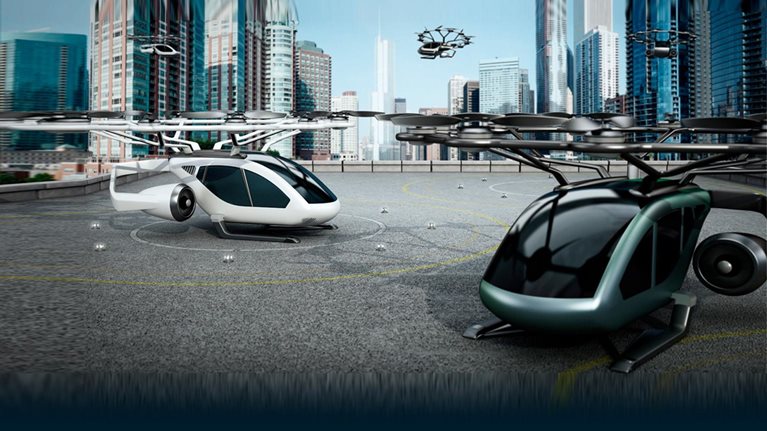
Incumbents are getting in on the future air mobility action
TTC family of brands
My Trafalgar
Destinations
Get Inspired
866 513 1995
Short Haul Tours

View All Short Haul Tours
Short haul inspiration
Short flight times, city breaks and historic sites
From the vibrant city breaks to nature escapes, discover the best of North America with short-haul tours.

Adventure on your doorstep
From thundering falls to towering trees, and explosive geysers to ancient cliff dwellings, just within the US there are 63 national parks primed for adventure seekers. A short hop away you can explore the beauty of Alaska, the Grand Canyon, and Yellowstone, or journey across Canada’s famous Rocky Mountains by rail.
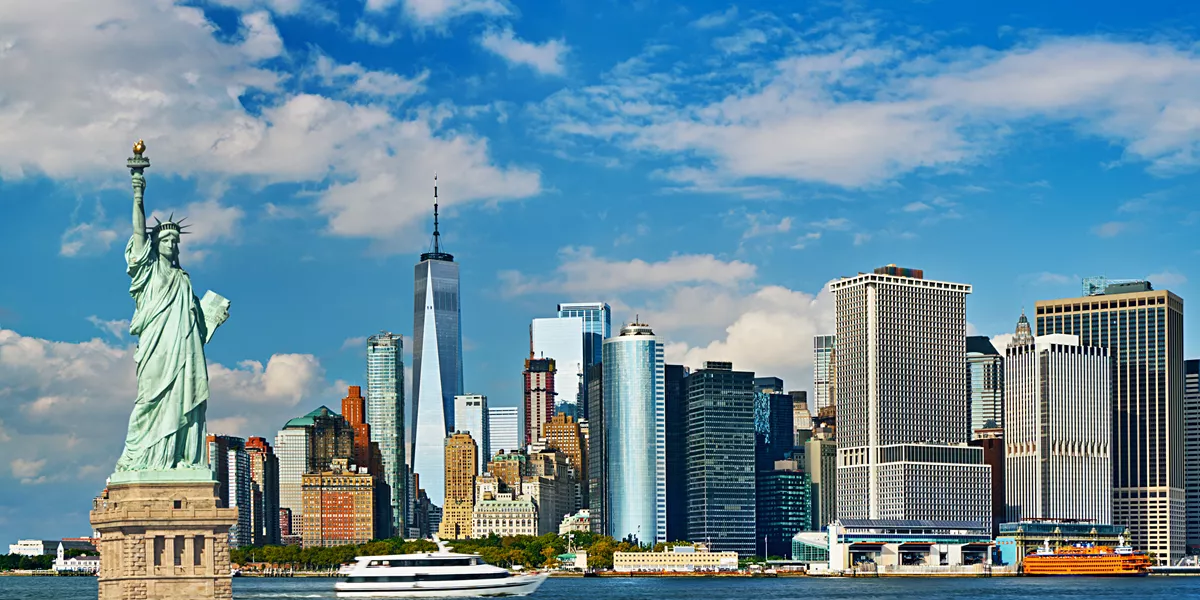
Iconic city breaks
Seek the bright lights of New York City, boogie to jazzy tunes in New Orleans, or find scenic beauty in Vancouver with short-haul flights. Each US and Canadian city has its own character, making every city break unique. Plan a romantic getaway, girls’ trip or vacation for your family.

Famous historical sites
Put down the history books and board a quick flight to join short-haul North American tours. Find yourself gazing into the epic Grand Canyon, admiring the ancient ruins of Mesa Verde, or wandering charming cobblestone streets in Quebec City. From natural wonders to man-made sights the US and Canada have a fascinating past to discover.
Popular visa-free countries
No visa, no worries. These visa-free countries make short-haul flights and tours a breeze, giving you the freedom to roam.
United States

Short haul tours for every season
It’s easy to chase fall foliage and escape icy winter days with quick flights to nearby destinations. Here’s when to take your dream trip to join short-haul tours.

Request a quote
Staycations
Short Breaks
Get expert help booking your vacation
Embark on a tour without leaving the country, these tours are perfect if you have limited time, search for your short haul tour.
Explore our tours and discover your next Trafalgar adventure
Help & Info
WE MAKE TRAVEL MATTER®
Unedited Reviews
Our Destination Management Companies
Frequently Asked Questions
Travel Updates
Do Not Sell or Share My Personal Information
Travel Planning
Get Your Free Brochure
Booking Conditions
Trip Deposit Level
Recommendations
Trafalgar Tours Limited is a proud member of The Travel Corporation family of companies.
#SimplyTrafalgar
Travel House, Rue du Manoir St Peter Port, Guernsey, GY1 2JH
Selected Region
United Kingdom
New Zealand
South Africa
Copyright 2024 Trafalgar. All rights reserved.
Terms and Conditions
Privacy Policy
Cookie Policy
How Short-Haul Flight Bans Are Transforming European Travel
By Elissa Garay

Short-haul flights between European cities have become increasingly common over the last few decades, popularized by the cheap, quick, and convenient offerings from low-cost regional carriers like EasyJet and Ryanair. But that will start to change this year. In an effort to shrink the region’s carbon output, governments across the European Union are imposing bans on short-haul flights, with new legislation taking effect as early as this spring.
One country leading such measures is France, which last spring became the world’s first major economy to enact a nationwide ban on short-haul domestic flights on routes where train journeys of two and a half hours or less exist as an alternative. When the law goes into effect in March, it will eliminate 12 percent of French domestic flights, according to The Guardian . Flights set to be eliminated include routes from Paris to popular tourist cities such as Bordeaux, Lyon , and Nantes.
The French government had previously locked national flag carrier Air France into adhering to similar short-haul domestic route cutbacks in 2020 as a condition to the airline’s €7 billion ($7.9 billion) pandemic-related government bailout. The newer 2021 legislation expands that measure to apply to all airlines operating within the country.
For now, not all French regional flights will be eliminated. “Exceptions [to the ban] will be made for cities that provide connections to international flights,” says Anne-Laure Tuncer, spokesperson for France’s tourism agency.
Beyond France, other European lawmakers have proposed similar bans, with countries like Spain, Germany , and nations throughout Scandinavia considering such legislation. Austria, for one, has already begun enacting similar policies, albeit as part of a piecemeal approach, as a condition for Austrian Airlines’ pandemic bailout in 2020. Officials stipulated that the airline had to eliminate domestic flights where alternative train journeys under three hours were available, affecting the carrier's route between Vienna and Salzburg .
Although initial bans are just taking shape, more stringent European flight restrictions could already be on the horizon. Organizations like France’s Citizens’ Convention on Climate and consumer group UFC-Que Choisir have advocated for broader bans in France that would eliminate domestic flights on routes that have a rail alternative of under four hours. Global environmental group Greenpeace took those calls further still, demanding in October that the E.U. ban all short-haul flights throughout Europe in instances where a train journey of under six hours is available—the group says that such a move would impact a third of the continent’s busiest short flights and eliminate 3.5 million tons of carbon emissions per year.
However, some experts caution that while banning select short-haul flights can provide some immediacy to carbon-cutting efforts, those measures alone will not resolve the aviation industry’s much bigger carbon emissions problem. According to European air traffic management organization Eurocontrol , flights shorter than 311 miles made up 31 percent of European flights in 2020 yet contributed just over four percent of the E.U.’s total aviation emissions. In contrast, long-haul E.U. flights over 2,485 miles, for which alternative train travel is less feasible, made up six percent of all flights, but produced 52 percent of emissions.
“France’s ban on domestic short-haul flights can only be seen as a very hesitant step in the right direction,” says Herwig Schuster, a Greenpeace E.U. transport expert. The French ban will translate to less than a one-percent reduction in carbon emissions for the country’s air transport sector, according to a Greenpeace report .
Broader flight bans appear to have public support, though: A 2020 survey from the European Investment Bank found that 62 percent of Europeans support an E.U.-wide ban on short-haul flights, while 49 percent of Americans support similar measures in the U.S.
To supplement these new policies, the E.U., is aiming to double high-speed rail traffic by 2030 , while even sleeker high-speed trains are due out in France in time for the Paris 2024 Olympics. And, in the meantime, travelers who do seek out domestic rail connections in the country aren’t likely to be disappointed.
French train travel is “not just a mode of transportation, but an experience in itself,” says Mark Smith, founder of train travel website The Man in Seat 61 , who says France’s high-speed trains offer conveniences that planes don’t, like city center-to-city center transport, free Wi-Fi, no advance boarding requirements, and great scenery. “Through the large picture windows you see far more of France than from a plane,” he says.
Serious talks about similar bans on short-haul flights have yet to materialize in the U.S., where train infrastructure is significantly less developed. Even in the absence of such legislation, travelers should consider choosing trains over planes when feasible, experts like sustainable travel consultant Rose O’Connor say. Such sustainable options are a “value-add, rather than a sacrifice,” she says. Not only is cutting emissions a necessity of the times, O'Connor explains, but “train travel offers a sort of romance and history that plane travel simply does not.”
Recommended

Nolinski Venezia
.jpg)
100 Princes Street: First In

Europe Travel Guide
By signing up you agree to our User Agreement (including the class action waiver and arbitration provisions ), our Privacy Policy & Cookie Statement and to receive marketing and account-related emails from Traveller. You can unsubscribe at any time. This site is protected by reCAPTCHA and the Google Privacy Policy and Terms of Service apply.
Simple Flying
Long-haul vs short-haul: when to book your 2024 travel.
The long-haul travel booking trends vary based on the geographical region.
- Booking times for air travelers vary depending on the length of the flight, with shorter-haul flights being booked closer to the departure date.
- In Europe, Middle East, and Africa, the majority of people booked their long-haul flights at least 90 days in advance.
- In the Asia-Pacific region, there is more volatility in air travel bookings, with a significant number of last-minute bookings for both short-haul and long-haul flights.
Have you ever wondered how early people book their air travel? How early should people book their domestic air travel? And what about international travel? While there is no specific time to book your tickets, most global passengers tend to book early. While some airlines may offer last-minute discounts on airfares, it depends on how empty or booked the flight is.
The 2023 Skyscanner Horizons Report shows results from the booking window segments, searches, and actual bookings, showing that booking times for flights vary if it is a short-haul or a long-haul flight. This article explores booking times for air travelers in various parts of the world in 2023 and their plans for booking in 2024.
Europe, Middle East, and Africa (EMEA)
In 2023, approximately 34% of travelers in EMEA regions booked their short-haul air travel at least 30 days before their intended departure date. This is slightly lower than the percentage of people in 2022, which was 37%. For long-haul flights, the 90-day booking window seemed to have been the norm for booking for the majority of people.
Nearly 30% of people booked long-haul travel at least 90 days before departure in 2023, a 2% decrease compared to 2022. The most popular domestic travel booking window is between 7 and 29 days before travel. However, during the summer, a majority of people booked domestic travel within seven days of travel, capitalizing on last-minute escapes.
North, South, and Central America (AMER)
In 2023, approximately 35% of travelers in AMER regions booked their short-haul air travel at least 30 days before their intended departure date. The numbers are in line with those in 2022. However, more people took advantage of last-minute travel deals and booked within seven days than last year.
For long-haul flights, 40% of people booked their travel at least 90 days before departure in 2023, a 4% increase compared to 2022. Once again, the 7-29 day booking window remains the most popular for domestic air travel, with nearly a third of travelers booking during the period.
Asia-Pacific (APAC)
A greater volatility is observed in air travel bookings from people in the APAC region. Short-haul bookings are made either between 7 and 29 days before departure or between 60 and 89 days before the flight date. In the months between August and November, a majority of last-minute bookings (less than a week) took place.
For long-haul flights, the 90-day booking window seemed to have attracted approximately 28% of all people in the APAC region. It is a 2% increase compared to 2022. What is most intriguing is that nearly one-third of air travelers booked their long-haul flights within 30 days of departure.
This trend is significantly different from that in other regions where long-haul (generally international) air travel is booked at least 90 days in advance. This shows how different various markets can be when it comes to air travel booking.
What are your thoughts on domestic and international air travel booking time? How early or late do you book your short-haul and long-haul flights? Share your experience in the comments section.
National Geographic content straight to your inbox—sign up for our popular newsletters here

Is this the end of short-haul flights? How sustainability is shaping the future of air travel
From fuel levies to a ban on short-haul flights, sustainability shake-ups in the airline industry are set to change where you can travel by plane — and how much it will cost.
This January, Air France became the first airline to introduce biofuel surcharges, with other airlines looking set to follow suit. Furthermore, a recent ruling in the carrier’s home country now requires all aircraft refuelling within France to do so using sustainable aviation fuel (SAF), which is far more expensive than traditional aviation fuel, meaning potentially higher airfares for passengers as a result. Meanwhile, in a bid to cut carbon emissions, governments across Europe are beginning to rethink their short-haul flight networks. We look at what all of this might mean for passengers. What’s happening with aviation fuel? As of 1 January 2022, France requires the fuel mix of all airlines refuelling in the country to be at least 1% SAF, with this figure set to increase to 2% in 2025 and 5% in 2030. The EU is likely to introduce a blending mandate in 2025 that will help the airline industry in its stated aim of becoming carbon-neutral by 2050. In the meantime, Sweden has announced plans to become the first country to charge a landing and take-off fee for older, less fuel-efficient aircraft. How this cost will be passed on to passengers, however, remains to be seen.
Will passengers be affected? Air France’s announcement will mean that passengers pay between €1-12 (85p-£10), depending on flight duration and cabin class. Partner airline KLM and subsidiary Transavia will also implement surcharges in efforts to offset the more expensive SAF. All of this is driven by costs: SAF is between four and eight times more expensive than traditional fuel (which accounts for up to 30% of an airline’s costs) but allows airlines to cut carbon emissions by 75% compared with conventional kerosene jet fuel. Air France has said it expects the costs of SAF — largely made from used cooking oil as well as agricultural waste — to drop as more European countries start producing it. And how will this affect flight routes? As part of efforts to reduce airline carbon emissions, a growing number of European nations are proposing to follow France’s example: last April, the country banned short-haul domestic flights on routes where comparable train journeys of up to two-and-a-half hours exist. Services affected included flights between Paris and Nantes, and Lyon and Bordeaux. Similar bans are being considered in Spain, Germany and Scandinavian countries. During the pandemic, Austrian Airlines secured a government bailout on condition it ditched domestic flights where a train journey of under three hours was available. Will this be enough to cut emissions? For many environmentalists, these bans don’t go far enough. According to last October’s Greenpeace report Get On Track, the French ban will result in less than a 1% reduction in carbon emissions for the country’s air transport sector. John Hyland, the EU spokesperson for the group said: “The EU and European governments, France included, should ban all short flights when passengers can use less polluting transport like rail or bus.” A third of the busiest short-haul flights in Europe have train alternatives of under six hours, according to research by think tank OBC Transeuropa, which has called on European governments to ban short-haul flights in favour of accessible rail travel for all.
And what does this mean for long-haul flights? Banning short-haul flights won’t resolve aviation’s bigger problem: long haul. According to European air traffic management body Eurocontrol, long-haul flights account for 6% of all the continent’s flights but produced a disproportionate 52% of emissions — making the implementation of biofuel an increasingly burning issue.
Biofuel facts
What's it made of? SAF is largely composed of used cooking oil and forestry and agricultural waste.
Cutting carbon: SAF emits 75% less carbon than traditional aviation fuel.
Concerns: The EU Court of Auditors has voiced concerns over imported ‘virgin’ oils (including palm oil) being passed off as ‘used’, fearing deforestation. It’s called for tougher regulation and monitoring.
Published in the April 2022 issue of National Geographic Traveller (UK)
Follow us on social media
Facebook | Twitter | Instagram
For Hungry Minds
Related topics.
- SUSTAINABILITY
- SUSTAINABLE TOURISM
- CARBON FOOTPRINT
- AIR POLLUTION
You May Also Like

5 simple things you can do to live more sustainably

Some U.S. national parks are trying to go carbon-free. What does that mean for visitors?

Welcome to Hydra, the Greek island that said no thanks to cars

Second SpaceX megarocket launch ends with another explosion. What happens next?

What is a sonic boom—and is it dangerous?
- Environment
History & Culture
- History & Culture
- History Magazine
- Mind, Body, Wonder
- Coronavirus Coverage
- Paid Content
- Terms of Use
- Privacy Policy
- Your US State Privacy Rights
- Children's Online Privacy Policy
- Interest-Based Ads
- About Nielsen Measurement
- Do Not Sell or Share My Personal Information
- Nat Geo Home
- Attend a Live Event
- Book a Trip
- Inspire Your Kids
- Shop Nat Geo
- Visit the D.C. Museum
- Learn About Our Impact
- Support Our Mission
- Advertise With Us
- Customer Service
- Renew Subscription
- Manage Your Subscription
- Work at Nat Geo
- Sign Up for Our Newsletters
- Contribute to Protect the Planet
Copyright © 1996-2015 National Geographic Society Copyright © 2015-2024 National Geographic Partners, LLC. All rights reserved
Opening Hours
Monday - Saturday 9:00am - 6:00pm
Sunday 10:00am - 4:00pm
- South Africa
- San Salvador
- Turks and Caicos
- Dominican Republic
- St. Kitts and Nevis
- St. Vincent & The Grenadines
- Austrian Alps
- French Alps
- Enquire Now
If you are looking for some inspiration for your next holiday, click here
- Sign-up to our newsletters
Beach holidays

Safari holidays

Corporate Ski Holidays

Tailor-made holidays

Corporate travel

Ski Holidays

Family holidays

Sustainable travel

Villa holidays

If you are looking for some inspiration for your next holiday, click here
Inspiration.

Newsletters

Luxury Holidays

- Holiday Feedback

- Terms and Conditions

- Why Flagstone Travel

Short-Haul Travel
Travelling closer to home.
At Flagstone Travel we understand that sometimes when you want to get away, you may not want to travel too far from home. It could be a weekend break, you might have small children, or simply want to avoid jet lag. We have handpicked some lovely properties within Europe and North Africa that are the perfect break away without too much travelling. If you would rather speak to a specialist please do give us a call.
Travel. Discover. Experience.

Villa Holidays

If you are looking for a short flight, we have put together a list of holiday ideas that are close to home and perfect for a weeks holiday. Please do have a look at some of the ideas and properties below. If one of these catches your eyes do not hesitate to get in touch and one of our specialists will be happy to help you.
Let us help create your next holiday
Whilst we are huge fans of some of our short-haul destinations, it is worth keeping in mind that with a range of direct flights to far-flung destinations like Mauritius and the Dominican Republic and short transfer times at the other end, sometimes exotic countries are closer than you think.
Featured Properties

Belmond La Residencia
This boutique hotel exudes a timeless charm, an air of sophistication and provides a tranquil oasis between the mountains and coast…

Club Med La Palmyre Atlantique
Newly renovated for summer 2020, the Club Med La Palmyre Atlantique is a wonderful family-friendly beachfront destination…

Domes of Corfu
Combining 21st century comforts with historic beauty, gastronomic delights and luxurious accommodation…

Verdura Resort & Spa
Located on the Southern Sicilian coast, the Verdura Resort & Spa is in the charming town of Scicca, a fantastic place…

Villa Gallardo
The Villa Gallardo is a perfect family retreat sleeping six guests on the picturesque island of Majorca, set into the hillside…

Villa Titanica
Utterly lavish and luxurious, the Villa Titanica is a secluded retreat with every facility that you could wish for…
Explore the French Riviera and all the beauty that it offers from cuisine to art and of course delightful coastlines
Enjoy a family holiday and sample the local delights found in Greece, warm sand beaches and stunning scenery
Take your time away to embrace the slower pace of life that Italy can offer, Sicily’s island life is a treat to embrace

A weekend in Seville
Eslava is a friendly restaurant located on the river and is the perfect place to enjoy dinner or a few plates of tapas…

Our favourite beach bars for a Friday cocktail
Sweeping views of the coastline of Mykonos provide a sensational spot for a cocktail with a relaxed ambience…
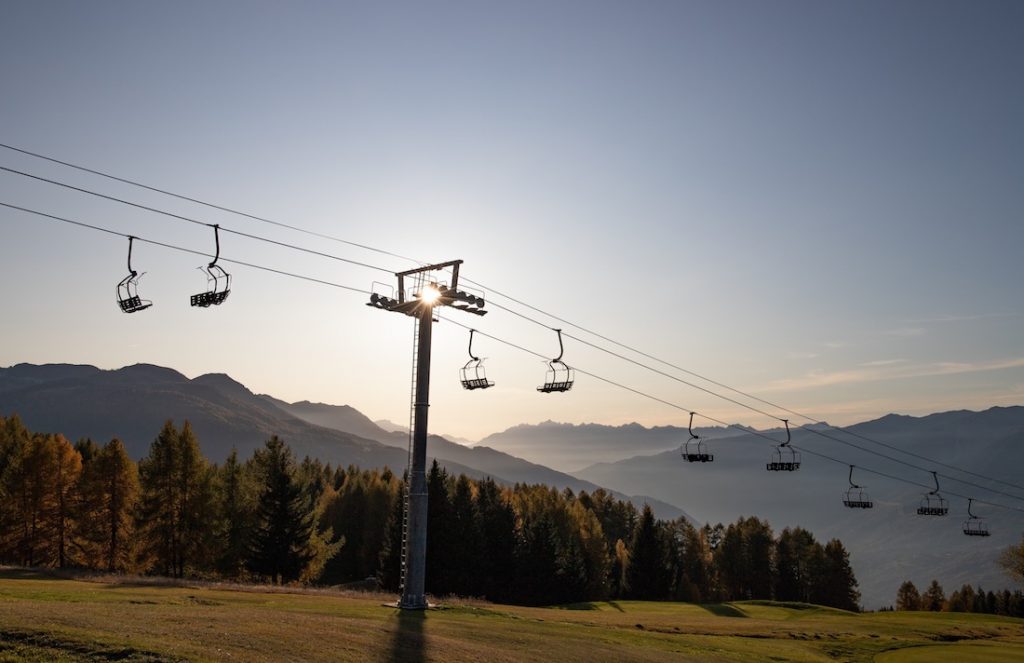
Visiting the Alps in the summer
The summer in the Alps provides an idyllic holiday full of natural beauty, there are many activities to do as well as…
Call us +44(0)208 0502 681
Make an enquiry, sign-up to our newsletter.
- Cookie Policy
- Privacy Policy
Monday - Friday: 9:00am - 6:00pm
Saturday: 10:00am - 4:00pm
Sunday: Closed.
© 2024 by Flagstone Travel

France Just Banned Short-Haul Flights. Why Are So Few Routes Affected?
To reduce carbon emissions, lawmakers want travelers to opt for trains on shorter journeys
Staff Contributor
:focal(1929x1286:1930x1287)/https://tf-cmsv2-smithsonianmag-media.s3.amazonaws.com/filer_public/63/6c/636cc060-48fc-4e30-89ea-715c0d6430aa/gettyimages-898559722.jpg)
To combat climate change, France has officially prohibited short domestic flights for journeys that will take less than 2.5 hours by train.
“This is an essential step and a strong symbol in the policy of reducing greenhouse gas emissions,” says Clement Beaune, France’s transport minister, in a statement , per CNN ’s Saskya Vandoorne.
“As we fight relentlessly to decarbonize our lifestyles,” he adds, “how can we justify the use of the plane between the big cities which benefit from regular, fast and efficient connections by train?”
The initiative will last for at least three years. At that point, officials will evaluate its success and decide how to move forward, per the New York Times ’ Aurelien Breeden.
Advocates are hopeful that France’s robust high-speed rail lines will help the country decrease its carbon emissions. According to Carlton Reid of Forbes , 17 of the 20 busiest air routes in Europe are less than 434 miles long, “the sort of distances where intercity trains can offer faster, cleaner and more sustainable journeys.”
Critics say that the ban’s limitations are significant. So far, only three routes have been discontinued: the routes between Paris-Orly Airport and the cities Nantes, Bordeaux and Lyon. Additionally, the ban only applies to routes that have direct train service running “several times a day” on a schedule that will allow travelers to spend at least eight hours at their destination. It also doesn’t apply to connecting flights.
“All that fuss, for not that much,” says Geneviève Laferrère of France Nature Environnement , a federation of environmental groups, to the Times .
The three banned routes account for only about 5,000 flights per year, out of a total of nearly 200,000 domestic flights, per Le Monde ’s Manon Romain, Adrien Sénécat and Maxime Vaudano. And domestic flights only make up a small percentage of emissions generated by the country’s transportation sector.
“The French flight ban is a symbolic move, but will have very little impact on reducing emissions,” says Jo Dardenne, an aviation director at cleaner transport campaign group Transport & Environment, to CNN.
The ban is part of a larger initiative to lower greenhouse gas emissions in France. Lawmakers originally introduced the airline bans in 2021, and the government recently released plans to cut emissions by 50 percent by 2030 (compared with numbers from 1990).
Laferrère tells the Times that the ban could be an educational tool, encouraging travelers to make environmentally conscious choices and refrain from booking short-haul flights. Still, she adds, the ban has “so many constraints that the effectiveness is gone.”
Get the latest stories in your inbox every weekday.
Alex Chun | READ MORE
Alex P. Chun is an intern from Northwestern University.

Short-haul flights are the first target for sustainable aviation — but aerospace experts say banning them probably won't make the difference
- Regulators want to slash the number of short-haul flights to reduce aviation's carbon emissions.
- But experts told BI recent regulations might only have a small impact on reducing emissions.
- Shifting to greener fuels and enhancing green tech are essential for cleaner air travel.
- This article is part of " Future of Sustainable Aerospace ," a series exploring the industry's green trends.
To reduce carbon emissions and boost sustainability in the aviation industry, some governments and air-travel regulators are looking to ban or severely limit the number of short-haul flights.
Air travel is a dirty business: While the industry produces about 2% of global energy-related carbon emissions, a plane trip produces 100 times more carbon dioxide per hour than a train or bus ride. And short-haul flights, or routes of 932 miles or less , produce a disproportionate amount of carbon output. A report from the International Council on Clean Transportation, or ICCT, found that short-haul flights made up a third of all global aviation emissions in 2018.
But experts say bans alone won't significantly impact carbon emissions. Instead, reducing the number of short-haul flights, experimenting with new technologies, and investing in environmentally friendly travel alternatives may go further in reducing the aerospace industry's carbon footprint.

Regulations on short-haul flights aren't yet having the desired effect on emissions
Denmark announced last year that by 2025, Danes will be able to fly domestically on a "completely green route," meaning that at least one domestic flight would be carbon-free and that all domestic flights would be fossil-fuel-free by 2030. The move makes Denmark one of the first countries to signal publicly for stronger aviation-sustainability policies.
The Danish government also announced a "green tax " on passengers starting in 2025 to finance the country's green domestic route. The tax, converted from Danish krone, amounts to $9 for flights within Europe, $35 for medium-distance flights, and $56 for long-haul flights.
Similarly, earlier this year, the French government enacted a law banning any flights within the country that a train ride of 2-and-½ hours or less could replace.
The law initially seemed like a big win for climate activists, but the number of exceptions for international travel meant the law only impacted three routes between Paris-Orly Airport and the cities of Nantes, Bordeaux, and Lyon.
France's hyper-connected railway allows passengers to move between cities without changing travel patterns. Since high-speed trains already connect the impacted flight routes, potentially limiting the law's effects, the country's aviation industry isn't likely to see any big changes to its carbon footprint.
"In terms of absolute emissions reduction, it's not going to do too much," Sola Zheng, a researcher on the ICCT aviation program team, told Business Insider. "But it's a very good precedent that governments are willing to pull these kinds of levers."
But banning short-haul flights doesn't solve the industry's carbon-footprint problem, Giulio Mattioli, a transportation researcher at the Technical University of Dortmund in Germany, said. He told BI that banning these routes would have minimal environmental effects unless regulations address the industry holistically.
"Maybe ban short-haul flights, but then don't expect that to solve the problem," he said. "We need to talk about the long-haul flights as well."
Other strategies could curb the industry's emissions
The solution to the industry's emissions problem, Mattioli said, can be divided into a three-part strategy: avoid, shift, and improve. Avoiding would mean curbing the amount of flying we already do, or at least maintaining the same level of travel without increasing it; shifting would mean moving toward methods of travel, such as trains or buses, that create less pollution; and improving would mean enhancing sustainable aviation technology.
Mattioli told BI these strategies are all complementary, so the aviation industry must implement them simultaneously.
"It's only if we do those three things at the same time we have a chance of reducing emissions at the rate at which we should," Mattioli said.
Zheng said one emerging aviation technology that could make a difference is alternative power sources, such as hydrogen or electricity. Shorter flights are great candidates to test these advancements since electric and hydrogen-powered planes are often distance-constrained due to battery density and fueling needs. Because short-haul flights don't have to travel very far, the aviation industry won't have to change many flight patterns to test alternative power sources.
Sustainable aviation fuels have also recently gained industry attention because they're largely made of waste materials or renewable biomass. While aircraft could theoretically use these materials for longer flights, supply problems make their use as primary fuel unrealistic for the near future.
"You want to develop these other solutions for the shorter ones, so you can decarbonize both at the same rate," Zheng said.
Passengers can help reduce emissions, too
Flying continues to be a priority for travelers. A report from the International Civil Aviation Organization found that demand for air travel is expected to grow by about 4.3% a year over the next 20 years .
But Zheng said passengers are interested in making their travel greener and are willing to take steps to accomplish that goal. A Booking.com survey found that 76% of surveyed passengers want to make their travel more sustainable over the next year, and 43% of surveyed passengers are willing to pay more for it.
Zheng recommended flying on newer aircraft or booking an economy seat. Flights that dedicate more seats to standard seating can fit more people, reducing each passenger's carbon footprint.
"We have to experiment," she said. "There's never going to be a silver bullet."


Electric planes are coming: Short-hop regional flights could be running on batteries in a few years
Assistant Professor of Aerospace Engineering, University of Michigan
Disclosure statement
Gökçin Çınar receives research funding from the government and other entities to work on sustainable aviation technologies.
University of Michigan provides funding as a founding partner of The Conversation US.
View all partners
- Bahasa Indonesia
Electric planes might seem futuristic, but they aren’t that far off, at least for short hops.
Two-seater Velis Electros are already quietly buzzing around Europe , electric sea planes are being tested in British Columbia, and larger planes are coming. Air Canada announced on Sept. 15, 2022, that it would buy 30 electric-hybrid regional aircraft from Sweden’s Heart Aerospace, which expects to have its 30-seat plane in service by 2028. Analysts at the U.S. National Renewable Energy Lab note that the first hybrid electric 50- to 70-seat commuter plane could be ready not long after that. In the 2030s, they say, electric aviation could really take off.
That matters for managing climate change. About 3% of global emissions come from aviation today, and with more passengers and flights expected as the population expands, aviation could be producing three to five times more carbon dioxide emissions by 2050 than it did before the COVID-19 pandemic.
Aerospace engineer and assistant professor Gökçin Çınar develops sustainable aviation concepts, including hybrid-electric planes and hydrogen fuel alternatives, at the University of Michigan. We asked her about the key ways to cut aviation emissions today and where technologies like electrification and hydrogen are headed.
Why is aviation so difficult to electrify?
Aircraft are some of the most complex vehicles out there, but the biggest problem for electrifying them is the battery weight.
If you tried to fully electrify a 737 with today’s batteries, you would have to take out all the passengers and cargo and fill that space with batteries just to fly for under an hour.
Jet fuel can hold about 50 times more energy compared to batteries per unit mass. So, you can have 1 pound of jet fuel or 50 pounds of batteries. To close that gap, we need to either make lithium-ion batteries lighter or develop new batteries that hold more energy. New batteries are being developed, but they aren’t yet ready for aircraft.

An electric alternative is hybrids.
Even though we might not be able to fully electrify a 737, we can get some fuel burn benefits from batteries in the larger jets by using hybrid propulsion systems. We are trying to make that happen in the short term, with a 2030-2035 target for smaller regional planes. The less fuel burned during flight, the fewer greenhouse gas emissions.
How does hybrid aviation work to cut emissions?
Hybrid electric aircraft are similar to hybrid electric cars in that they use a combination of batteries and aviation fuels. The problem is that no other industry has the weight limitations that we do in the aerospace industry.
That’s why we have to be very smart about how and how much we are hybridizing the propulsion system.
Using batteries as a power assist during takeoff and climb are very promising options. Taxiing to the runway using just electric power could also save a significant amount of fuel and reduce the local emissions at airports. There is a sweet spot between the added weight of the battery and how much electricity you can use to get net fuel benefits. This optimization problem is at the center of my research.
Hybrids would still burn fuel during flight, but it could be considerably less than just relying entirely on jet fuel.
I see hybridization as a mid-term option for larger jets, but a near-term solution for regional aircraft.
For 2030 to 2035, we’re focused on hybrid turboprops, typically regional aircraft with 50-80 passengers or used for freight. These hybrids could cut fuel use by about 10% .
With electric hybrids, airlines could also make more use of regional airports , reducing congestion and time larger planes spend idling on the runway.
What do you expect to see in the near term from sustainable aviation?
Shorter term we’ll see more use of sustainable aviation fuels, or SAF. With today’s engines, you can dump sustainable aviation fuel into the same fuel tank and burn it. Fuels made from corn, oilseeds , algae and other fats are already being used.
Sustainable aviation fuels can reduce an aircraft’s net carbon dioxide emissions by around 80% , but supply is limited, and using more biomass for fuel could compete with food production and lead to deforestation.
A second option is using synthetic sustainable aviation fuels, which involves capturing carbon from the air or other industrial processes and synthesizing it with hydrogen. But that’s a complex and costly process and does not have a high production scale yet.

Airlines can also optimize their operations in the short term, such as route planning to avoid flying nearly empty planes. That can also reduce emissions.
Is hydrogen an option for aviation?
Hydrogen fuel has been around a very long time, and when it’s green hydrogen – produced with water and electrolysis powered by renewable energy – it doesn’t produce carbon dioxide. It can also hold more energy per unit of mass than batteries.
There are two ways to use hydrogen in an airplane: either in place of regular jet fuel in an engine, or combined with oxygen to power hydrogen fuel cells, which then generate electricity to power the aircraft.
The problem is volume – hydrogen gas takes up a lot of space. That’s why engineers are looking at methods like keeping it very cool so it can be stored as liquid until it’s burned as a gas. It still takes up more space than jet fuel, and the storage tanks are heavy, so how to store, handle or distribute it on aircraft is still being worked out.
Airbus is doing a lot of research on hydrogen combustion using modified gas turbine engines with an A380 platform, and aiming to have mature technology by 2025 . Australia’s Rex airline expects to start testing a 34-seat, hydrogen-electric airplane for short hops in the next few years.
Due to the variety of options, I see hydrogen as one of the key technologies for sustainable aviation.
Will these technologies be able to meet the aviation industry’s goals for reducing emissions?
The problem with aviation emissions isn’t their current levels – it’s the fear that their emissions will increase rapidly as demand increases. By 2050, we could see three to five times more carbon dioxide emissions from aviation than before the pandemic.
The International Civil Aviation Organization , a United Nations agency, generally defines the industry’s goals, looking at what’s feasible and how aviation can push the boundaries.
Its long-term goal is to cut net carbon dioxide emissions 50% by 2050 compared with 2005 levels. Getting there will require a mix of different technologies and optimization. I don’t know if we’re going to be able to reach it by 2050, but I believe we must do everything we can to make future aviation environmentally sustainable.
- Climate change
- Engineering
- Electrification
- United Airlines
- Airplane emissions
- Lithium-ion batteries
- Battery technology
- Greenhouse gas emissions (GHG)

Scheduling Analyst

Assistant Editor - 1 year cadetship

Executive Dean, Faculty of Health

Lecturer/Senior Lecturer, Earth System Science (School of Science)

Sydney Horizon Educators (Identified)
- Search Please fill out this field.
- Manage Your Subscription
- Give a Gift Subscription
- Newsletters
- Sweepstakes
If you click on links we provide, we may receive compensation.
- Travel Products
- Travel Accessories
I’m a Frequent Flier, and These 15 Things Helped Me Survive an 18-hour, Nonstop Flight in Economy — From $6
These comfy travel essentials made my seat in coach feel like first class.
Travel + Leisure / Tyler Roeland
Even the most frequent fliers, like myself, will tell you that flying is hard on the body. Between the altitude change, long periods of sitting in confined seats, and recycled plane air, a long-haul flight can leave your body feeling depleted of energy, sore, and dehydrated. Plus, flying for long periods of time also takes its toll on the mind. Even though I’ve been a travel writer for nearly 10 years (I fly so often that I have all of my major airport codes memorized), I still get anxiety — particularly when I know that I’ll be stuck on a plane long enough to watch “The Godfather” trilogy.
Fortunately, these types of flights have become more manageable thanks to my trusty long-haul flight packing list . Recently, I flew on Qantas’ new 16-hour nonstop flight from New York City to Auckland, and despite having business class tastes, I was on a coach budget. But, because I was intentional about what I packed in my carry-on , I was pretty comfortable from takeoff to touchdown. Armed with my arsenal of travel essentials , and my foolproof routine for using them, I almost looked forward to my return flight — the key word there is almost . So, whether your next long-haul flight is to New Zealand or Newfoundland, consider investing in these 15 travel writer-vetted items for a more comfortable experience in economy.
Cabeau Evolution S3 Travel Neck Pillow
I upgraded my flimsy, unsupportive travel pillow to this dual-density memory foam game-changer years ago. Now, it has more than 4,800 five-star ratings and is so popular that 2,000 of them were sold last month, according to Amazon. I love that it comes with seat straps, so I can attach it to any headrest and don’t have to worry about it sliding to one side. The removable, washable cover is also handy, and there’s even a pocket where I can stash my earplugs (which I'll go into more detail about later). And like all of the best travel pillows , the Cabeau Evolution S3 comes with a carrying case and compresses down to be about half its size for easy packing.
Vouching for its comfort, one shopper wrote , “I just traveled to Israel and England this past month using this pillow and it allowed me to sleep an average of six hours on the four long-haul flights, which is the best I’ve ever been able to do in all my years of flying."
Anker USB-C Portable Charger
Not having a full charge on my devices stresses me out, and I hate relying on in-seat power stations on flights as, half of the time, they don't work (or the cabin crew won’t let you have your stuff plugged in during takeoff and landing). That’s why I always travel with Anker's best-selling power bank with nearly 5,500 five-star ratings. While the bank itself takes hours to fully charge, it can boost my iPhone 14 to 50 percent in about 45 minutes. And I only need to charge the power bank once every five days despite using it every day to charge my phone, smartwatch, GoPro 12, and Apple AirPods. It’s also compatible with Samsung devices and includes a USB-C port in addition to the USB-A port. A carrying case and cables are included.
“It worked great,” according to a reviewer , who relied on it for a 14-hour flight. Another traveler chimed in to add that it’s “perfect when you are on planes or in airports for 20 hours.”
Neutrogena Makeup Remover Facial Cleansing Towelette Singles
If you can’t shower on a plane, washing your face is the next best thing. Of course, the water from the taps in the lavatory doesn’t have a great reputation. For that reason, I travel with these tiny, pre-moistened cleansing towelette singles from Neutrogena. Despite being so gentle on the skin (i.e. no harsh astringents here), they remove makeup and even my mineral sunscreen, which can be hard to get off even with a full skincare routine and proper bathroom counter space). But don’t just take it from me. They have nearly 60,000 five-star ratings and more than 90,000 units were bought in the last month, making them no. 1 on Amazon’s list of makeup cleansing wipes best-sellers .
Is it cheaper to buy wipes in bulk? Yes. But as you can see from the following review , sometimes, singles are the best way to go: "They don’t dry out when they are individually wrapped and you can take as many as you need for the trip."
Crest Scope Mini Brushes-Disposable Toothbrushes With Toothpaste and Pick
It’s amazing how having a clean mouth can make you feel like a new person. But it can be hard to brush your teeth while you’re traveling. What’s great about these disposable toothbrushes is the fact that you don’t even need water, or toothpaste. The bristles feature liquid-like “beads” of Crest Scope. And despite being so compact, these toothbrushes also have built-in picks on the ends, which means that I’m not panicking if I run out of floss mid-flight.
Amazon notes that more than 4,000 of them were sold in the last month, and many of the 3,100-plus five-star ratings come from grateful travelers who spend a lot of time in the air. As a matter of fact, one shopper called them their “go-tos on long flights.”
Flex Flap Cell Phone Holder and Flexible Tablet Stand
While most long-haul flights have seatback screens, sometimes they don’t work or have the most recent season of “Yellowstone.” That’s why I like to download my favorite movies and shows on my phone. I’m starting to see more travelers do the same, and on my last flight, I noticed one with this handy phone holder/tablet stand. Designed by a flight attendant, the Flex Flap is a lightweight and compact way to prop up, display, and view your smartphone. When you need to mount your device, simply fold or hang the flap and adjust it until you get your desired height and angle. More than 4,000 of them were bought last month, and it has nearly 4,000 five-star ratings.
According to one traveler , “It can hold your phone or tablet horizontally or vertically… The stand is also very sturdy, so you don’t have to worry about your device falling over.”
Loop Quiet Ear Plugs for Noise Reduction
Most airlines give you disposable earplugs for overnight flights. The catch? They’re not the best quality (i.e. don’t expect them to drown out the wails of the crying baby two rows behind you). Instead, invest in these noise-reduction silicone earplugs. They come in six colors and include a carrying case, as well as customizable tips so you can fit them to your ears. Before balking at the $30 price tag, just know this: they’re reusable, and with more than 50,000 five-star ratings, they’re ranked no 1. on Amazon’s list of earplug best-sellers .
One traveler , who wrote that they’ve always struggled to find earplugs that “strike the right balance between comfort and effectiveness,” called them a “game-changer.”
SB Sox Compression Socks
Last year, when I flew 40 hours to the Maldives, I arrived in paradise with ankles and shins so swollen that I spent the first day scrolling on WebMD when I should have been snorkeling. Fortunately, it all could have been avoided had I worn compression socks . This particular pair not only increases your blood circulation, which prevents swelling and pain, but it also has cushioned heel and toe support to “provide unmatched comfort,” per the brand.
Taking to the review section, a frequent flier raved that these socks came recommended by their nurse friend: "Thankfully, this [pair] worked so perfectly on my recent trip to Australia and New Zealand. For my long-haul flights, my feet did not swell at all. I will never buy any other brand from now on."
Grace & Stella Under-eye Masks
These under-eye masks are described as "an energy drink for your eyes” by the brand. Meanwhile, one satisfied shopper , who wears them while “jet-setting around the globe,” called them “magic in a packet" as they get their tired under-eyes "refreshed and rejuvenated like I've had eight hours of sleep in just 20 minutes.” After reading that testimony, I wasted no time adding a pack to my carry-on for this long-haul flight.
They're easy to slip on right before you land and really wake up your under-eyes with their brightening, de-puffing, and hydrating blend of moisturizing hyaluronic acid, fine line-smoothing glycerin, and wrinkle-reducing sea moss, and strengthening amino acids.
Twelve South AirFly SE Bluetooth Wireless Audio Transmitter Receiver
I don’t understand how we can send people to the moon, but airlines are still having us use headphones with cords. Hopefully, they hop aboard the wireless train soon, but until then, I’ll be using this Bluetooth transmitter to connect my AirPods to the in-seat entertainment console. I love not having to worry about getting tangled up in a cord or having it come unplugged when my seatmate gets up to use the loo. Not an Apple aficionado? No worries. This transmitter, which can last 20 hours between charges, works with most wireless headphones and earbuds.
“The Bluetooth connectivity to my AirPods didn’t skip a beat,” one traveler was happy to report, noting that they tested it on back-to-back long flights and determined that this product is “worth every penny."
Basic Concepts Airplane Foot Hammock
Admittedly, when airplane foot hammocks first came out, I thought that they were dorky. But these days? I’m a believer. Elevating my feet on a long flight not only makes me feel more comfortable, but it also helps minimize swelling. What’s great about this particular foot hammock is its versatility. It offers three different positions, and thanks to its extra-long adjustable strap, it even works for the tallest of NBA players, according to the brand (granted, they should probably be flying business class).
“I use this every time I go on long flights (like 20-hour long flights) and trust me, this makes economy so much more comfortable,” gushed a reviewer , who appreciated that it’s simple to set up and comes with a travel case.
Owala FreeSip Insulated Stainless Steel Water Bottle
Because airplane cabins circulate air pulled from the outside, where there’s very little moisture at cruising altitudes, it’s very important to stay hydrated. Otherwise, you can suffer from undesired symptoms like headaches, dry skin, scratchy throat, etc. Instead of waiting for the flight attendants to come around once every few hours with their drink cart, I pack a water bottle. I’m loyal to my Yeti Rambler ($40), but if that’s too pricey, consider this BPA-free top-seller from Owala with more than 33,000 five-star ratings. It’s also made with stainless steel and features double-wall insulation, so it keeps drinks cold for up to 24 hours.
“I can always count on this bottle to keep my water refreshingly chilled,” one well-hydrated shopper said in their Amazon review. “I also appreciate the thoughtful design features of this bottle, such as the leak-proof lid and convenient carry handle.”
Gold Bond Healing Hand Cream
Speaking of dry skin, to keep my hands from cracking on long-haul flights (where I use a ton of hand sanitizer), I lather on this best-selling, dermatologist-recommended cream . Its fast-acting formula alleviates dryness quickly, and unlike other hand creams, it's non-greasy, so I don't have to worry about accidentally getting it on my clothes. What's more, its 3-ounce tube makes it TSA-approved for my carry-on. Though it's an M.V.P. for long-haul flights, the Gold Bond Healing Hand Cream is great to have handy on every point of my trip; from the hotel to the beach, and beyond.
“It lasts a long time, it doesn’t smell, and it keeps my hands soft,” summed up one traveler , who declared it their “favorite lotion.”
Amazon Kindle
In-flight magazines may be things of the past (I was a huge fan of Skymall, although I always browsed, never bought), but these days, e-readers are where it’s at when it comes to reading on long-haul flights. This 5.6-ounce Amazon Kindle is great for travel because it’s ultralightweight. And despite being incredibly compact (it's just slightly larger than my iPhone 14), with its 16 gigabytes of storage, it can hold thousands of books. Plus, it can go up to six weeks in between charges. The high resolution screen is crisp and clear, and the adjustable front light and dark mode means that you won’t have to turn on your overhead seat light and wake up your neighbor.
"It’s small enough to take anywhere," a shopper said . "It's fantastic for long flights and days lounging about."
Benefiber On The Go Prebiotic Fiber Supplement Powder Set
I have Crohn’s disease, so I have a very iffy digestive system. That said, even if your gut is healthy, long-haul flights — and traveling in general — can do a serious number on it. For that reason, I recommend stocking up on these single-serving prebiotic supplements, which were recommended to me by my gastroenterologist. Unlike most plane fare and junk food that I let myself indulge in while flying, these small packets (which I mix with any non-alcoholic beverage) are packed with fiber. Not only does this fiber increase your chances of having healthy bowel movements (and eliminating uncomfortable mid-flight bloating), it also encourages the growth of good gut bacteria.
“These are very convenient to maintain a fiber regiment while traveling,” wrote one Amazon shopper , who has already reordered them several times.
Lky Digital Sleep Mask for Side Sleepers 3-pack
According to the Sleep Foundation , “Light is the most important external factor affecting sleep.” Scientists agree that we get more sleep, and better quality sleep, in dark environments. While most airlines give you eye masks on long-haul flights, they leave a lot to be desired with their low-quality designs. Fortunately, this mask — which has more than 44,000 five-star ratings — blocks 100 percent of light and promises total darkness. Plus, it has an adjustable headband, so you don’t need to worry about it sliding to one side (a feature that side sleepers will appreciate). And thanks to the 3D-contoured fit, it doesn’t rest flat against your eyes and won’t ruin your mascara.
“These are great; they're light-blocking, lightweight, and super soft,” according to a traveler , who found that, unlike most masks that put pressure on the face, this one doesn’t leave their eyes feeling heavy and puffy when they wake up.
Love a great deal? Sign up for our T+L Recommends newsletter and we’ll send you our favorite travel products each week.
Shop More T+L-Approved Picks
:max_bytes(150000):strip_icc():format(webp)/tl-french-bag-styles-tout-4bf818a1c2b14834832a460b74a6e3ed.jpg)
Related Articles
- Restaurants
- Things to do
- Things to Do
- Travel Stories
- Add a Place
- Travel Forum
- Travellers' Choice
- Help Centre
Heathrow to Moscow - Air Travel Forum
- Tripadvisor Forums
- Air Travel Forums
Heathrow to Moscow
- Hong Kong Forums
- United States Forums
- Europe Forums
- Canada Forums
- Asia Forums
- Central America Forums
- Africa Forums
- Caribbean Forums
- Mexico Forums
- South Pacific Forums
- South America Forums
- Middle East Forums
- Honeymoons and Romance
- Business Travel
- Train Travel
- Traveling With Disabilities
- Tripadvisor Support
- Solo Travel
- Bargain Travel
- Timeshares / Holiday Rentals
- Air Travel forum

In addition to the meal service you also get a free checked bag on the cheapest tickets. Interesting that St Petersburg which is a similar length flight is still short haul.
Actually Athens is a better example of this anomaly.

I noticed the replies referred to World Traveller cabin and Premium economy class. As we are travelling with Travelsphere from Heathrow to Moscow, the seats are possibly booked in as economy class. Can anyone please verify whether the free complimentary meal would also apply to economy class?

To SussexWorldtraveller
Much appreciated for your quick reply, and confirmation.
Kind regards,
This topic has been closed to new posts due to inactivity.
- Ryanair Malpractice - AVOID! 22:32
- Wizz . Stroller for 2 years + kid 22:28
- Photo ID easyjet 22:21
- Ryanair seat allocation 21:30
- How do I carry packages from relatives safely on a flight 20:15
- Not enough time to transit because of flight change 19:43
- Ryan Air Seats 19:38
- First time on BA and Business class and Heathrow questions 19:28
- Flights from LAX to India with a overnight lay over 18:46
- Wizzair refund: how to transfer it to your bank account? 18:43
- Can I pack Aerosols in my checked luggage I.e Febreze 18:23
- London Stansted Domestic Arrival > Connecting Flight 18:06
- Spring airlines at Shanghai Pudong which terminal ? 17:16
- Bad experience with Lufthansa - complaint 16:57
- ++++ ESTA (USA) and eTA (Canada) requirements for visa-exempt foreign nationals ++++
- ++++ TIPS - PLANNING YOUR FLIGHTS +++++++
- Buy now or later? What's with these screwy ticket prices?
- Around-the-world (RTW) tickets
- All you need to know about OPEN JAW tickets
- Beware of cheap business class tickets (sold by 3rd parties)
- ++++ TIPS - PREPARING TO FLY +++++++++
- TIPS - How to prepare for Long Haul Flights
- TIPS - Being Prepared for Cancellations and Long Delays
- TIPS - How to survive being stuck at an airport
- Flights delays and cancellations resources
- How do I effectively communicate with an airline?
- Airline, Airport, and Travel Abbreviations
- Air Travel Queries: accessibility,wedding dresses,travelling with children.
- Connecting Flights at London Heathrow Airport
- TUI Airways (formerly Thomson) Dreamliner - Movies and Seating Information
- ++++ COVID-19 CORONAVIRUS INFORMATION ++++
- Covid-19 Coronavirus Information for Air Travel
Who are the Chase transfer partners? Everything to know

Ultimate Rewards points are the currency of most Chase-branded credit cards. You can earn Chase Ultimate Rewards points for everyday spending and then redeem them for a wide range of rewards.
Despite increasing competition from American Express Membership Rewards points , Citi ThankYou Rewards points and Capital One miles , Chase Ultimate Rewards points have maintained their place as one of the most valuable and useful points currencies — especially with valuable products like the Chase Sapphire Reserve® , Chase Sapphire Preferred® Card and Ink Business Preferred® Credit Card .
Transferring Ultimate Rewards to travel partners is often the most valuable way to redeem your hard-earned points. With 14 different transfer partners, you have plenty of options, since you can keep your Chase points in your Ultimate Rewards account until you can transfer them.
Related: The best Chase credit cards
Here is everything to know about Chase Ultimate Rewards' transfer partners.
What are the Chase transfer partners?
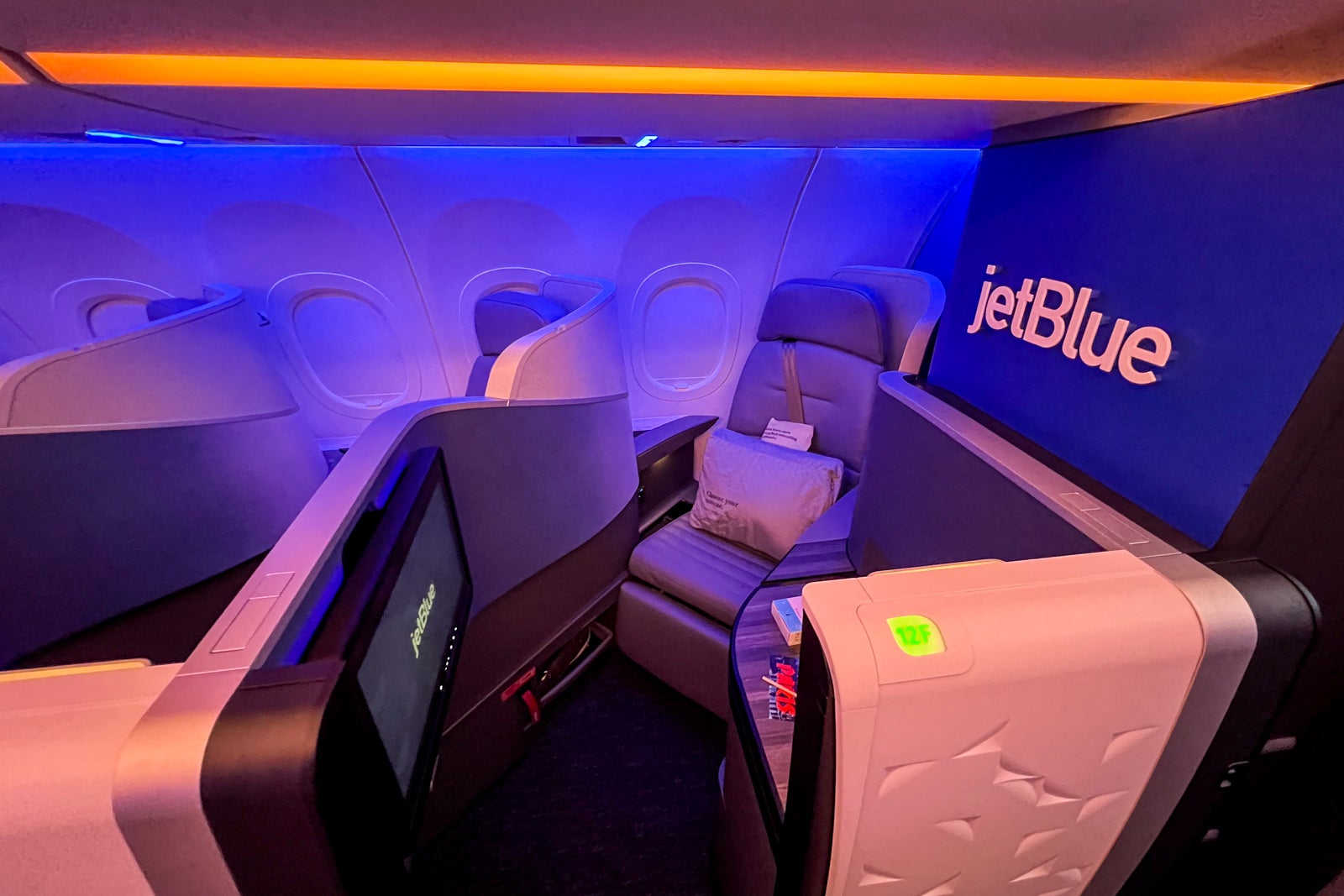
You can transfer Ultimate Rewards points to 11 airline programs:
- Aer Lingus AerClub
- Air Canada Aeroplan
- Air France-KLM Flying Blue
- British Airways Executive Club
- Emirates Skywards
- Iberia Plus
- JetBlue TrueBlue
- Singapore Airlines KrisFlyer
- Southwest Airlines Rapid Rewards
- United Airlines MileagePlus
- Virgin Atlantic Flying Club
Chase also partners with three hotel programs:
- IHG One Rewards
- Marriott Bonvoy
- World of Hyatt
All transfer ratios are 1:1 (though there are occasional transfer bonuses ), and you must transfer points in 1,000-point increments.
How long do Ultimate Rewards transfers take?
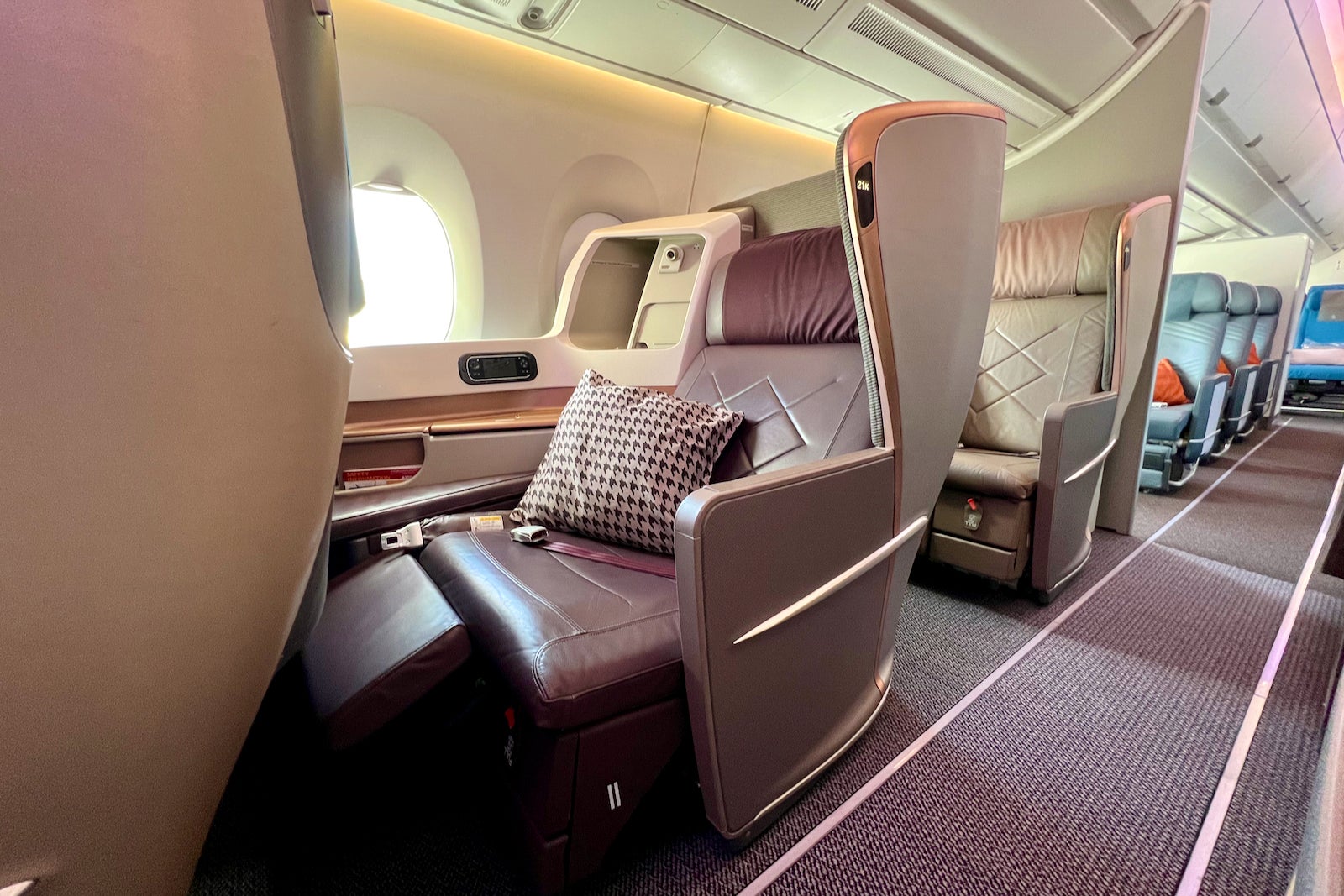
Most transfers from Chase Ultimate Rewards to its partner programs are instantaneous , with two exceptions. In our testing, transfers to both Singapore Airlines KrisFlyer and Marriott Bonvoy can take up to two business days.
We've heard anecdotal stories of delays with other programs, but as long as the name on your Ultimate Rewards account matches that on your loyalty program account, these should process immediately.
Note that transfer bonuses can also be inconsistent. For example, when TPG's Nick Ewen recently transferred points to Aeroplan to take advantage of a 20% bonus, the base points arrived immediately, but it took three days for the bonus points to post.
How do I transfer Chase points to partners?
You can easily transfer Chase points online. First, log in to your Chase account and navigate to the Ultimate Rewards portal. Under the Travel drop-down, select "Transfer to Travel Partners" to access the main transfer page.
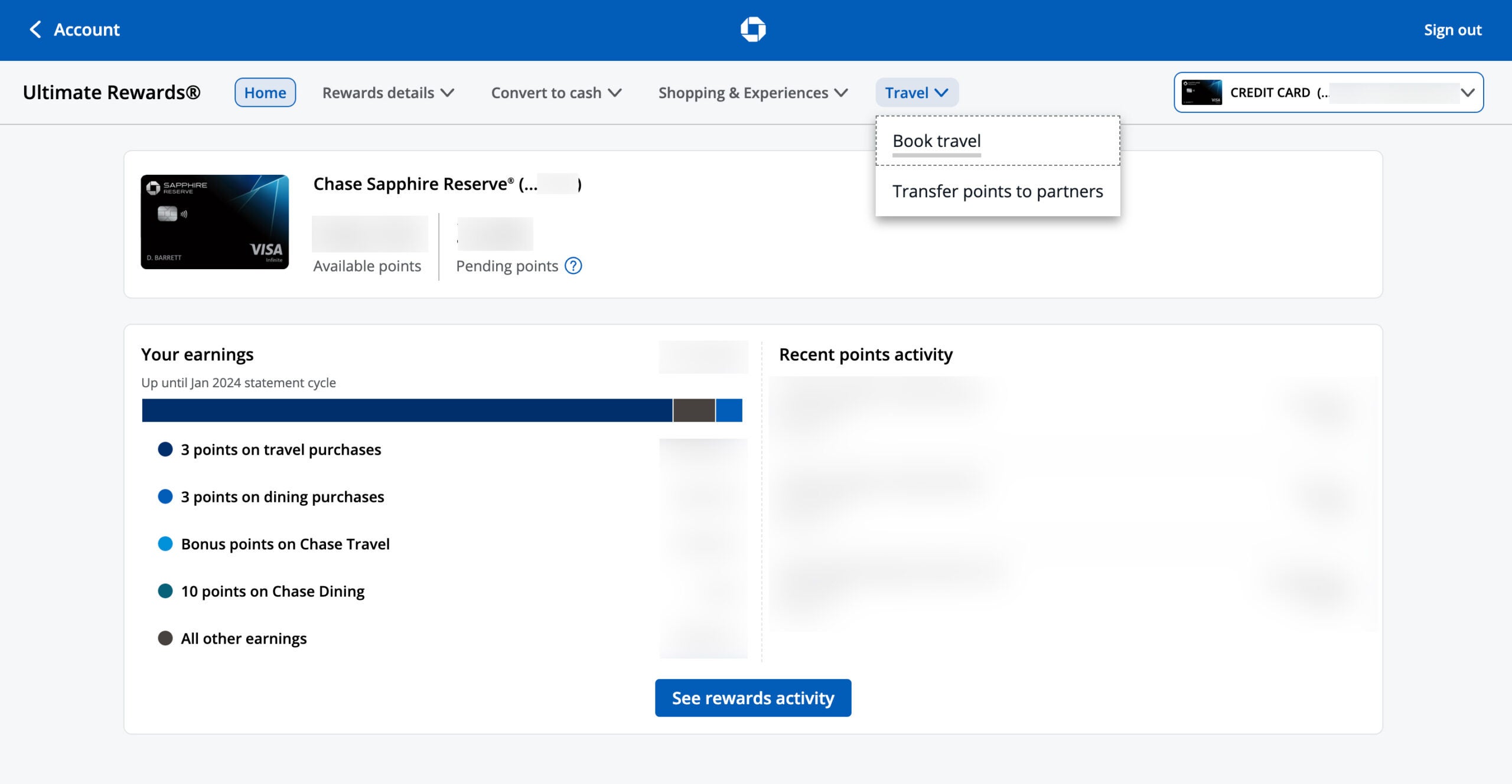
You will then see the list of transfer partners. Any current transfer bonuses will also be shown (note that the screen shot below may show outdated offers). Select your desired transfer partner, link your external account if you have not already done so, select the number of Ultimate Rewards points you wish to transfer and then submit the transfer.
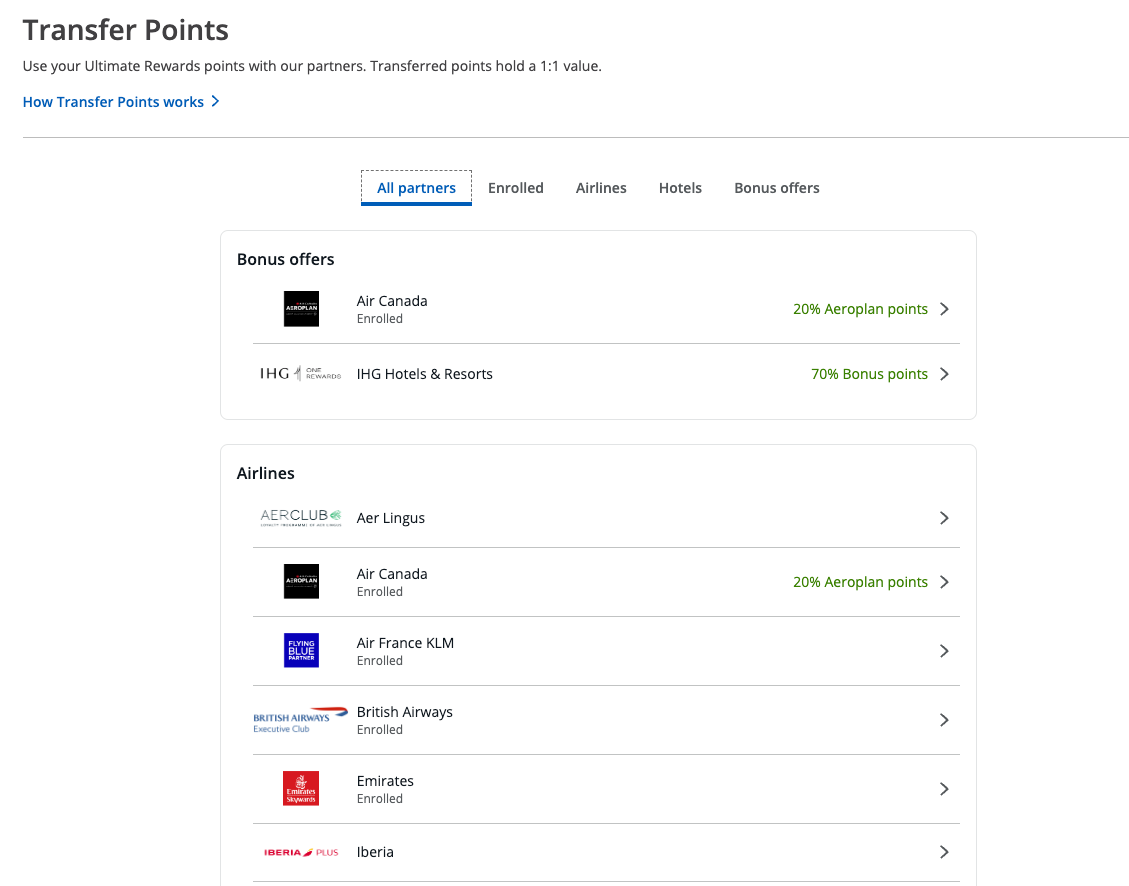
Remember, Ultimate Rewards transfers cannot be reversed, so it's best to wait until you have a specific use before transferring them.
What are the best Chase transfer partners?

Given the low award chart rates of the World of Hyatt program, many TPG staffers believe Hyatt is the best hotel transfer option for Ultimate Rewards points.
If you would prefer to transfer to one of the 11 different airline program partners, the best option may depend on which airlines fly to and from the destinations you wish to travel, who the program partners with and which airlines you like to travel with.
There are sweet spots to be found in most airline transfer options, especially those programs that have retained award charts .
Here are some of our favorite Ultimate Rewards sweet spots .
Top-tier Hyatt hotels
The World of Hyatt award chart has two appealing factors. First, its mere existence is notable, given most other hotel programs (including IHG One Rewards and Marriott Bonvoy, the other Chase hotel partners) have shifted to dynamic pricing .
Beyond that, Hyatt award rates can be incredibly low compared to some competitors. You can book some of the fanciest Park Hyatt properties in the entire portfolio, including the Park Hyatt New York and Park Hyatt Sydney , for just 35,000 points per night during off-peak dates. TPG values Hyatt points at 1.7 cents each, so 35,000 points are worth $595.
That's a great deal for hotels that sell for close to $1,000 per night, even when demand is low.
There's also great value at the lower end of the Hyatt award chart. Category 1 hotels range from 3,500 to 6,500 points per night, depending on whether you travel on peak, standard or off-peak dates.
Iberia flights to Madrid
Round-trip, off-peak flights from New York's John F. Kennedy International Airport (JFK), Chicago's O'Hare International Airport (ORD) and Boston Logan International Airport (BOS) to Spain's capital will only set you back 34,000 Avios in economy, 51,000 in premium economy or 68,000 in business when you transfer your Chase points to Iberia Plus. Considering that most airlines charge at least 60,000 miles for a one-way business-class award to Europe, you're essentially getting a 50% discount.
Related: 7 of the best airline award chart sweet spots

Flights to Hawaii with Alaska and American
By transferring your Ultimate Rewards to British Airways, you can book awards with Oneworld partners American Airlines and Alaska Airlines . As long as your nonstop flight distance is under 3,000 miles each way (and saver-level award space is available), you can leverage British Airways' distance-based award chart to fly from any West Coast gateway to Hawaii for only 32,000 Avios round-trip — after a December 2023 devaluation that saw prices increase by up to 32%.
ANA flights booked through Virgin Atlantic
For just 145,000 miles, you can fly round-trip in All Nippon Airways first class between the West Coast and Tokyo. Flights from other U.S. gateways only cost an extra 25,000 miles (170,000 miles round-trip). Business-class redemptions are an even better deal, costing just 90,000-95,000 miles round-trip, depending on your U.S. departure airport. If possible, you'll want to route through New York-JFK and fly ANA's new industry-leading "The Room" business class , which is only available on select routes.
However, availability can be difficult to come by.
Short-haul flights to Canada
Aeroplan stuck to an award chart for partner redemptions but added dynamic pricing for Air Canada flights. As a result, you can often find super-cheap short-haul tickets from the U.S. to Canada. For example, New York to Toronto Pearson Airport (YYZ) can be booked for under 6,000 miles one-way on many dates.
However, you can also find very reasonable award rates on Star Alliance partners through Aeroplan — including Lufthansa, Swiss and EVA Airways.
Related: Your complete guide to Star Alliance benefits
What are Chase Ultimate Rewards points worth?
TPG values Ultimate Rewards points at 2.05 cents apiece in our monthly valuations, and we believe you will receive the best value by transferring the points to partners.
However, you'll get varying values for Chase points if you pursue other redemption opportunities. For example, Ultimate Rewards points are worth 1.5 cents apiece through the Chase travel portal for Sapphire Reserve cardholders or 1.25 cents for those with the Sapphire Preferred or Ink Business Preferred . You'll also have access to Chase Pay Yourself Back as a cardholder of any of the above cards, and there are occasionally offers to use Chase points for Apple products or gift cards at an enhanced value.
Finally, Chase points are worth 1 cent apiece if used for simple cash back.
How do I earn Chase Ultimate Rewards points?
There are many ways to earn Chase points at 1-10 points per dollar spent, depending on the specific Chase credit card you carry.
The first three cards below earn fully transferable Ultimate Rewards points by themselves, while the remaining four are technically billed as cash-back credit cards .
However, if you have an Ultimate Rewards-earning card, you can effectively convert your cash-back rewards into Ultimate Rewards points. For this reason, having more than one Chase card can make sense to maximize your earning and redeeming potential.
Here are the cards that allow you to earn Chase Ultimate Rewards points.
Chase Sapphire Preferred Card
Welcome bonus: 75,000 bonus points after you spend $4,000 on purchases in the first three months from account opening
Why you want it: This is a fantastic all-around travel credit card . It earns points at the following rates:
- 5 points per dollar on Lyft (through March 2025)
- 5 points per dollar on all travel purchased through Chase Travel
- 3 points per dollar on dining, including eligible delivery services, takeout and dining out
- 3 points per dollar on select streaming services
- 3 points per dollar on online grocery purchases (excluding Target, Walmart and wholesale clubs)
- 2 points per dollar on all other travel
- 1 point per dollar on all other purchases
The Sapphire Preferred has no foreign transaction fees and has many travel perks , including delayed baggage insurance, trip interruption/cancellation insurance and primary car rental insurance .
Annual fee: $95
Application link: Chase Sapphire Preferred Card
Chase Sapphire Reserve
Welcome bonus: 75,000 points after you spend $4,000 on purchases in the first three months from account opening
Why you want it: The Sapphire Reserve offers earning power paired with travel perks that can easily cover the annual fee. It earns points at the following rates:
- 10 points per dollar on Lyft (through March 2025)
- 10 points per dollar on Chase Dining booked through Ultimate Rewards
- 10 points per dollar on hotel and car rental purchases through the Chase Travel
- 5 points per dollar on airline travel booked through Chase Travel
- 3 points per dollar on travel not booked through Chase
- 3 points per dollar on other dining purchases
- 1 point per dollar on all other eligible purchases
Other perks include an easy-to-use $300 annual travel credit , a fee credit for Global Entry or TSA PreCheck (up to $100 once every four years) and Priority Pass Select lounge access as well as the growing list of new Sapphire lounges . This is one of the few cards that allow you to use your Priority Pass membership for discounted meals in airport restaurants . Cardholders also get primary car rental coverage , trip interruption/cancellation insurance and other protections .
Annual fee: $550
Application link: Chase Sapphire Reserve
Ink Business Preferred Credit Card
Welcome bonus: 100,000 points after you spend $8,000 on purchases in the first three months from account opening
Why you want it: This is one of the best credit cards for small-business owners , earning 3 points per dollar on the first $150,000 spent in combined purchases on travel, shipping purchases, internet, cable and phone services, advertising made with social media sites and search engines each account anniversary year. You earn 1 point per dollar on all other purchases, and points don't expire as long as your account is open.
Application link: Ink Business Preferred Credit Card
Cash-back Chase credit cards
Four Chase credit cards are technically billed as cash-back products. However, suppose you have one of the three cards noted above. In that case, you can combine your points in a single account, converting these cash-back rewards into fully transferable Ultimate Rewards points.
Even better? None of these cards charge an annual fee.
Here are the four cards that offer this functionality:
- Chase Freedom Flex : Earn $200 after you spend $500 in the first three months of account opening. Earn 5% back on select bonus categories, which rotate every quarter and apply on up to $1,500 in combined spending (activation required). Plus, earn 5% on travel purchased through Chase Travel , 3% on dining at restaurants (including takeout and eligible delivery services) and 3% on drugstore purchases.
- Chase Freedom Unlimited : Earn an additional 1.5% cash back on everything you buy (on up to $20,000 spent in the first year), worth up to $300 cash back. Plus, earn 5% on travel purchased through Chase Travel , 3% on dining at restaurants (including takeout and eligible delivery services) and 3% on drugstore purchases. Earn 1.5% on all other purchases.
- Ink Business Cash Credit Card : Earn up to $750: $350 bonus cash back after you spend $3,000 on purchases in the first three months, and an additional $400 when you spend $6,000 on purchases in the first six months from account opening. Earn 5% cash back on the first $25,000 in combined purchases at office supply stores and on internet, cable and phone services each account anniversary year (then 1%). Earn 2% cash back on the first $25,000 spent in combined purchases at gas stations and restaurants each account anniversary year (then 1%).
- Ink Business Unlimited Credit Card : Earn $750 cash back after you spend $6,000 on purchases in the first three months from account opening. Earn unlimited 1.5% cash-back rewards on every purchase.
Note that Chase also issues the Ink Business Premier® Credit Card . However, the earnings on this card can't be combined with others in the Ultimate Rewards ecosystem.
Read more: Your guide to the Chase Ink Business credit cards
Bottom line
If you value the flexibility of choosing from 11 airline partners and three hotel partners, Chase Ultimate Rewards is one of our favorite credit card programs at TPG.
In the age of no-notice devaluations by some loyalty programs, it is smart to earn Ultimate Rewards via the range of credit card welcome bonuses, category bonuses and everyday spending, and then keep your Ultimate Rewards points until you are ready to transfer and book with an airline or hotel partner.
- Trazee Travel
- WhereverFamily
FX Excursions
- The source for luxury travelers
FX Excursions offers the chance for once-in-a-lifetime experiences in destinations around the world.
Itineraries
Specialty tours & events, british airways previews long-haul service to moscow, 2012 / march 2012.
British Airways debuted the upcoming four class cabin experience on the route from London Heathrow to Moscow. Starting March 25, British Airways will offer first-class travel between London and Moscow onboard a daily Boeing 747 service.
At four hours, the new long-haul flights to Moscow will be the shortest in the British Airways network.
As well as operating a daily Boeing 747 service, British Airways is also putting two daily long-haul Boeing 767s on the route to replace the existing short-haul service.
The change of aircraft means the route will change from a short-haul service operated with two cabins to a long-haul operation, offering customers up to four classes of travel, including premium service, fully flat-beds, comprehensive in-flight entertainment and a selection of food and drink.
Source: British Airways
Print Article
Get insider information and deals in your inbox!
- Comments This field is for validation purposes and should be left unchanged.
Read This Next
Phuket, outrigger laguna phuket beach resort, chef roberto conrad, 2012 / july 2012, all reads on this topic, speaking of business class, greek islands: sirens of the aegean, read them all.

Introducing
PONANT’s New Catamaran to Set Sail This Summer
PONANT recently announced the latest addition to its fleet: Spirit of Ponant , measuring 24 meters and boasting six staterooms. The catamaran was built in France and sets sail in July 2024 before heading to the Seychelles for the winter. Travelers can privately charter Spirit of Ponant for week-long voyages and on a per-cabin basis for select itineraries, with rates starting at $8,250 per person (based on double occupancy for a single cabin booking in Corsica).
Sponsored Content
Travel tips to help protect your health and your trip.
Five Tips to Help Minimize Potential Travel Problems
6 Reasons to Put Grand Rapids, Michigan, on Your Travel List
It’s time to start dreaming of your next trip. Here’s some destination inspiration for you. Take a visual journey through Grand Rapids, Michigan, with us.
Tulum, Mexico, Home to New, Seaside Boutique Hotel
The Mexico town of Tulum , about two hours south of Cancún, has experienced gentrification like few other tourism destinations in Mexico.
Experience Luxury and Tranquility at Hamad International Airport’s Hotel
Known as one of the best airports in the world and voted Best Airport in the Middle East by Global Traveler readers, Hamad International Airport aims to set new standards for the airport industry that exceed the expectations of travelers through its facility.
7 New Hotels to Stay at in Saudi Arabia This Year
Ever expanding in the realm of tourism, Saudi Arabia redefines hospitality itself with seven new hotels hitting the scene this year. From exclusive beach resorts to remote desert getaways, these hotels should top your Saudi Arabia travel list in 2024.
Visit These 5 Sustainable Winemakers in Temecula Valley, California
Don’t miss this year’s newport beach wine festival at balboa bay resort, book your next corporate getaway or meeting at famous kentucky distillery, hotel aka washington circle opens in washington, d.c., get to know michael dorf, ceo and founder of city winery, leisure lifestyle 2024, amache national historic site formally established as america’s newest national park, carneros resort and spa celebrates 20th anniversary with new offerings.
Carneros Resort and Spa , nestled in the wine region of Carneros, celebrates its 20th anniversary of providing guests with a quintessential Napa experience. The hotel commemorates the milestone with a curated list of limited-time offerings showcasing the resort's charm.
MORE TO TRAVEL
There’s more to travel than just getting there.
eFlyer Reviews
La coralina island house review.
On a pristine white-sand beach, La Coralina Island House sits on an entire bay in Bocas del Toro. Whether you take the one-hour flight from Panama City or a 90-minute flight from San José in Costa Rica, you are met with wellness and luxury on Panama’s northern coastline. The innovative boutique resort offers spectacular views of the ocean and a sense of relaxed seclusion, an idyllic escape for an ocean getaway.
- Vacation Rentals
- Restaurants
- Things to do
- Things to Do
- Travel Stories
- Rental Cars
- Add a Place
- Travel Forum
- Travelers' Choice
- Help Center
"Horrible Baggage Damage, Transit via Moscow with Aeroflot" - Air Travel Forum
- Tripadvisor Forums
- Air Travel Forums
"Horrible Baggage Damage, Transit via Moscow with Aeroflot"
- United States Forums
- Europe Forums
- Canada Forums
- Asia Forums
- Central America Forums
- Africa Forums
- Caribbean Forums
- Mexico Forums
- South Pacific Forums
- South America Forums
- Middle East Forums
- Honeymoons and Romance
- Business Travel
- Train Travel
- Traveling With Disabilities
- Tripadvisor Support
- Solo Travel
- Bargain Travel
- Timeshares / Vacation Rentals
- Air Travel forum

My boyfriend and I made a trip to Spain(Hong Kong-Madrid and Madrid- Hong Kong). We flied with Aeroflot and had both trips scaling in Moscow. Both going(30th Aug) and coming back(15th Sep), the luggages were spot checked as the suitcase locks were open when we got the luggages back (which we think by Russia Airport Authority as this has never happened since I have transited and been traveling around to any other countries). The going trip to Spain, both suitcase locks were open, broken lock for my boyfriend's case which he bought a new suitcase in Spain later. However, the real disaster was actually the coming back trip!!
When we picked up the luggage, we found out that both luggages were broken, there are also 2 breakage spots on my luggage itself, the luggage handle came off and the locks were totally forced broken(so my boyfriend lost totally 2 suitcases for this trip). I have locked them before check-in and my suitcase is the type that came with international lock that can be opened by international key in case the luggage would be spot checked by any airport authority so it should not be forced open in such manner!
That aside, when we got home, I opened the luggage just to find out that the things inside were totally flipped over in a big mess! The zipped compartment inside was open and the clothes are all messed up(as messy as a 80% sale basket in the shopping mall), the wrapped present was torn open, wrapping paper and the pieces of present scattered around everywhere in the luggage.
Furthermore, my boyfriend's mobile phone(old one with problem which we was thinking to get it fixed in China) and his suit (together with necktie and belt) were stolen! The box of mobile phone was left behind together with the torn open plastic suit bag but both of the items were no where to be found!
So this post is only an example and a warning for you guys to be careful and choose the airline wisely (we bought it because it was the cheapest flight ticket, an obviously resulted as an expensive lesson).
For us, this is the first and will be the last time we will ever fly with Aeroflot or transit via Russia. With what had happened, we would not hesitate to pay 100-200 EUR more to get a better flight that transit elsewhere!!!

Secondly, flying with a different carrier won't change anything, because it's not the airline staff, it's either security or baggage, the same guys will probably handle your case, whomever you fly with.
The airlines usually all say don't pack valuables in the hold, it genuinely never ceases to amaze me that people still do, there has been a lot of media focus on this in many countries.
Lastly, without wishing to start the old debate, I don't lock my bag and I use an old bag, I also don't pack anything of value, other than my clothes and shoes. The thought process is, even though I know it's not random usually and bags are scanned so they can see if valuables inside, but the thought process for me is that thieves will be more attracted to a locked bag, particularly a good one, on the suspicion something good in there to steal,,,as that could very well be why it's locked. Rather than wasting time on an old tatty unlocked one,,,
So far, fingers crossed and touch wood, I've encountered no issues.
The following day I brought my suitcase to one of the designated locations. I was told it would be repaired or replaced at their discretion. It was beautifully repaired. My point is, as a passenger I spent the time and made the effort to figure out how the process worked. I didn't wait until back in NY to post a rant.
I'm like froggy - never lock my suitcase. With all the trips I've done - nothing ever been stolen (I never pack expensive things in my suitcase, no damage (apart from normal wear and tear) and no "80% sale bin at the mall - hahahhaa
This post was determined to be inappropriate by the Tripadvisor community and has been removed.
This topic has been closed to new posts due to inactivity.
- Ryanair Malpractice - AVOID! 10:32 am
- Wizz . Stroller for 2 years + kid 10:28 am
- Photo ID easyjet 10:21 am
- Ryanair seat allocation 9:30 am
- How do I carry packages from relatives safely on a flight 8:15 am
- Not enough time to transit because of flight change 7:43 am
- Ryan Air Seats 7:38 am
- First time on BA and Business class and Heathrow questions 7:28 am
- Flights from LAX to India with a overnight lay over 6:46 am
- Wizzair refund: how to transfer it to your bank account? 6:43 am
- Can I pack Aerosols in my checked luggage I.e Febreze 6:23 am
- London Stansted Domestic Arrival > Connecting Flight 6:06 am
- Spring airlines at Shanghai Pudong which terminal ? 5:16 am
- Bad experience with Lufthansa - complaint 4:57 am
- ++++ ESTA (USA) and eTA (Canada) requirements for visa-exempt foreign nationals ++++
- ++++ TIPS - PLANNING YOUR FLIGHTS +++++++
- Buy now or later? What's with these screwy ticket prices?
- Around-the-world (RTW) tickets
- All you need to know about OPEN JAW tickets
- Beware of cheap business class tickets (sold by 3rd parties)
- ++++ TIPS - PREPARING TO FLY +++++++++
- TIPS - How to prepare for Long Haul Flights
- TIPS - Being Prepared for Cancellations and Long Delays
- TIPS - How to survive being stuck at an airport
- Flights delays and cancellations resources
- How do I effectively communicate with an airline?
- Airline, Airport, and Travel Abbreviations
- Air Travel Queries: accessibility,wedding dresses,travelling with children.
- Connecting Flights at London Heathrow Airport
- TUI Airways (formerly Thomson) Dreamliner - Movies and Seating Information
- ++++ COVID-19 CORONAVIRUS INFORMATION ++++
- Covid-19 Coronavirus Information for Air Travel

IMAGES
VIDEO
COMMENTS
Re-energizing short-haul air travel will help increase equity for rural communities and stimulate economies beyond major metropolitan hubs. Material uncertainties remain about RAM's future, but a discernible path forward exists to support strategic decision making—and to create value in a market whose time has come.
Airplane trips are soaring (excuse the pun) back to popularity, as the travel sector restarts post-pandemic. Flights throughout Europe increased by 72.8 per cent in July, year-on-year, and 47.6 ...
By Dr. Omar Memon. Published Oct 24, 2022. Fuel efficiency, carbon footprint, and aircraft maintenance are some of the key criteria in determining the economics of short and long-haul flights. Photo: Getty Images. The projected increase in the demand for commercial air travel advocates for energy-efficient airplanes and reduced carbon footprint.
Plus, with short-haul tours in US and Canada, you can bring the whole family to tick off natural wonders, soak up culture, and create lasting memories close to home. Here are some ideas for trips that are big on adventure but short on travel time. Save up to $592. Quick View.
Short-haul flights are generally agreed to be less than three hours, typically making them domestic or regional flights. Millions of travel enthusiasts are using Secret Flying to book incredible flight deals to amazing destinations. And it's all COMPLETELY FREE. The shortest commercial flight in the world is a 1.7-mile route between two ...
Broader flight bans appear to have public support, though: A 2020 survey from the European Investment Bank found that 62 percent of Europeans support an E.U.-wide ban on short-haul flights, while ...
In 2023, approximately 34% of travelers in EMEA regions booked their short-haul air travel at least 30 days before their intended departure date. This is slightly lower than the percentage of people in 2022, which was 37%. For long-haul flights, the 90-day booking window seemed to have been the norm for booking for the majority of people.
Short-haul drivers must not travel routes that extend past certain mileage limits miles from their starting position. The DOT classifies these as "air miles," which is defined as a straight line between two points on a map, whether there's a direct route or not.
From fuel levies to a ban on short-haul flights, sustainability shake-ups in the airline industry are set to change where you can travel by plane — and how much it will cost. By Sarah Barrell ...
While European short-haul business class often involves the standard economy seat with less cushioning, one traveler explained that some domestic first class seats on American Airlines are not ...
Whether an escape to the coast is needed or a shorter journey as a family, we understand that sometimes a shorter journey time will make your holiday.
In aviation, the flight length or flight distance refers to the distance of a flight. Aircraft do not necessarily follow the great-circle distance, but may opt for a longer route due to weather, traffic, to utilise a jet stream, or to refuel. Commercial flights are often categorized into long-, medium- or short-haul by commercial airlines based ...
Getty Images. The French government has become the first large economy to ban short-haul flights where a train or bus alternative of two and a half hours or less exists-a move which was voted on ...
To combat climate change, France has officially prohibited short domestic flights for journeys that will take less than 2.5 hours by train. "This is an essential step and a strong symbol in the ...
Banning ultra short-haul flights, creating air-rail links, and upping taxes on domestic and short flights - European countries are leading the way towards a public transport system that favors ...
Air travel is a dirty business: While the industry produces about 2% of global energy-related carbon emissions, a plane trip produces 100 times more carbon dioxide per hour than a train or bus ...
The introduction of France's short-haul flight ban has renewed calls for Europe to cut down on journeys that could be made by train. ... by increasing the time of travel from 2.5 hours to at ...
Published: September 19, 2022 8:21am EDT. Air Canada and United Airlines have ordered 30-seat regional hybrid-electric planes from Heart Aerospace that can go about 125 miles (200 km) fully ...
The Belgian region of Wallonia banned Jet4you from flying between Charleroi and Liège in 2006 for environmental reasons.. A short-haul flight ban is a prohibition imposed by governments on airlines to establish and maintain a flight connection over a certain distance, or by organisations or companies on their employees for business travel using existing flight connections over a certain ...
By Joe Cusmano On May 1, 2024. Air New Zealand is set to refresh its travel across the Tasman and to the Pacific with significant updates to its short-haul flight booking options. The airline ...
One frequent flier shares the 15 travel essentials that are always on her packing list for a long-haul flight. Explore the best travel accessories to stay comfy on an all-day (or all-night) flight ...
Answer 1 of 7: I read somewhere that the BA flight from Heathrow to Moscow, although classed as short haul, serves a complimentary meal. Can anyone tell me if this is correct please? Thanks
Short-haul flights to Canada. Aeroplan stuck to an award chart for partner redemptions but added dynamic pricing for Air Canada flights. As a result, you can often find super-cheap short-haul tickets from the U.S. to Canada. For example, New York to Toronto Pearson Airport (YYZ) can be booked for under 6,000 miles one-way on many dates.
Since my travel plans for the rest of the year didn't include my favorite city, I agreed. Trazee Travel; WhereverFamily; FX Excursions; The source for luxury travelers ; FX Excursions ... British Airways Previews Long-Haul Service To Moscow Mar 1, 2012 2012 / March 2012.
Answer 11 of 15: My boyfriend and I made a trip to Spain(Hong Kong-Madrid and Madrid- Hong Kong). We flied with Aeroflot and had both trips scaling in Moscow. Both going(30th Aug) and coming back(15th Sep), the luggages were spot checked as the suitcase locks were...
Tianjin Airlines will launch its first long-haul flights to Moscow this summer. The Chinese airline, which forms part of the HNA Group, will commence services from Tianjin to Moscow on 13 June ...